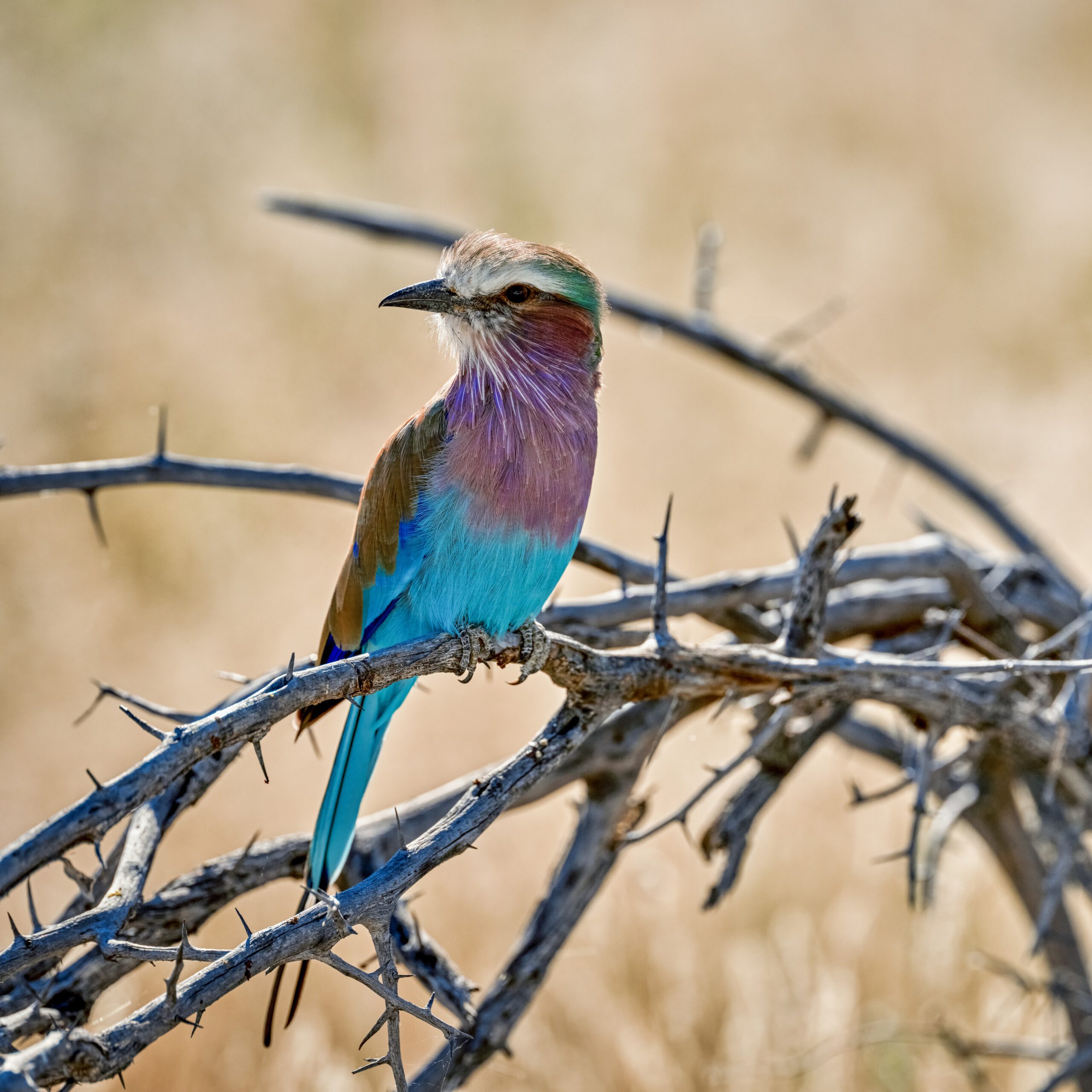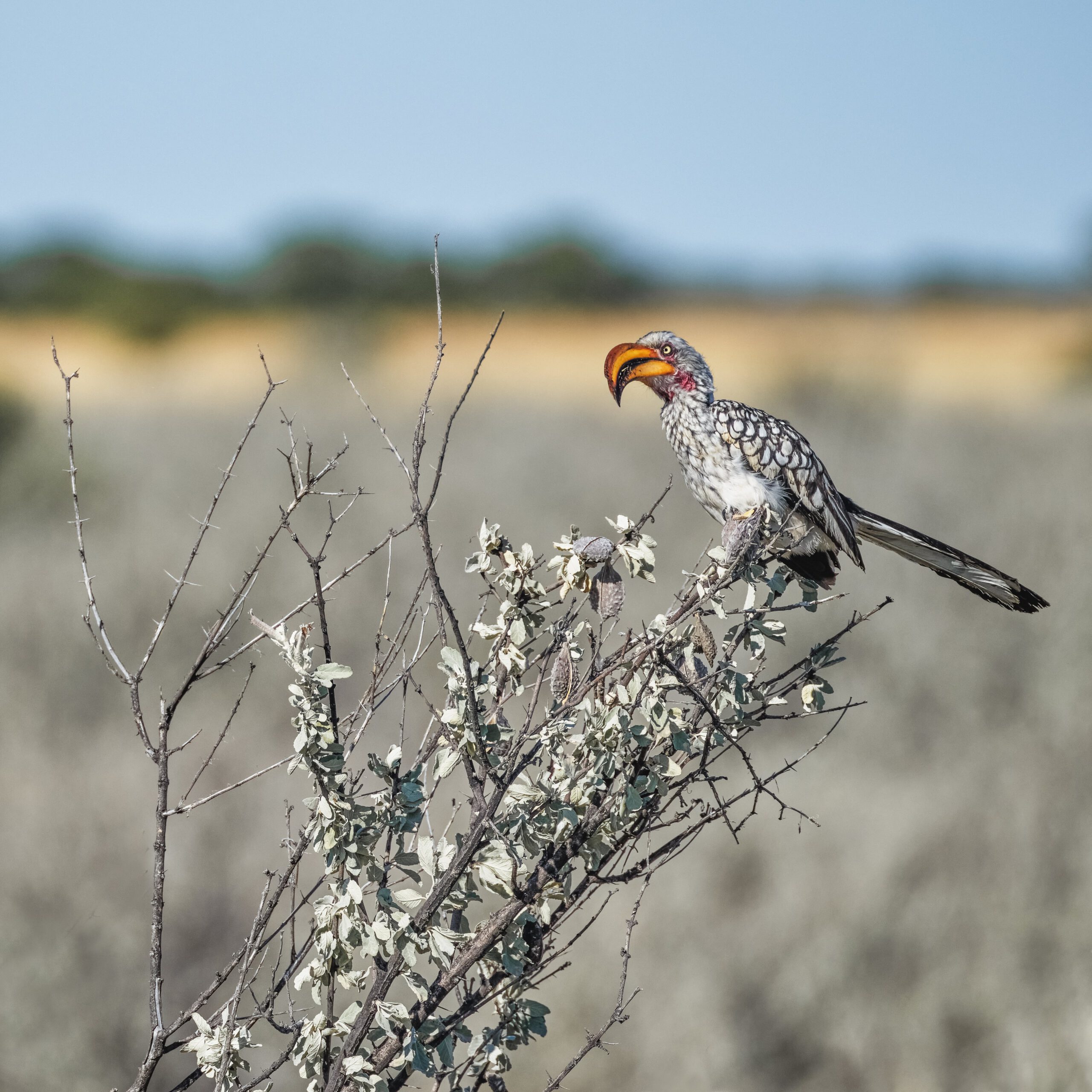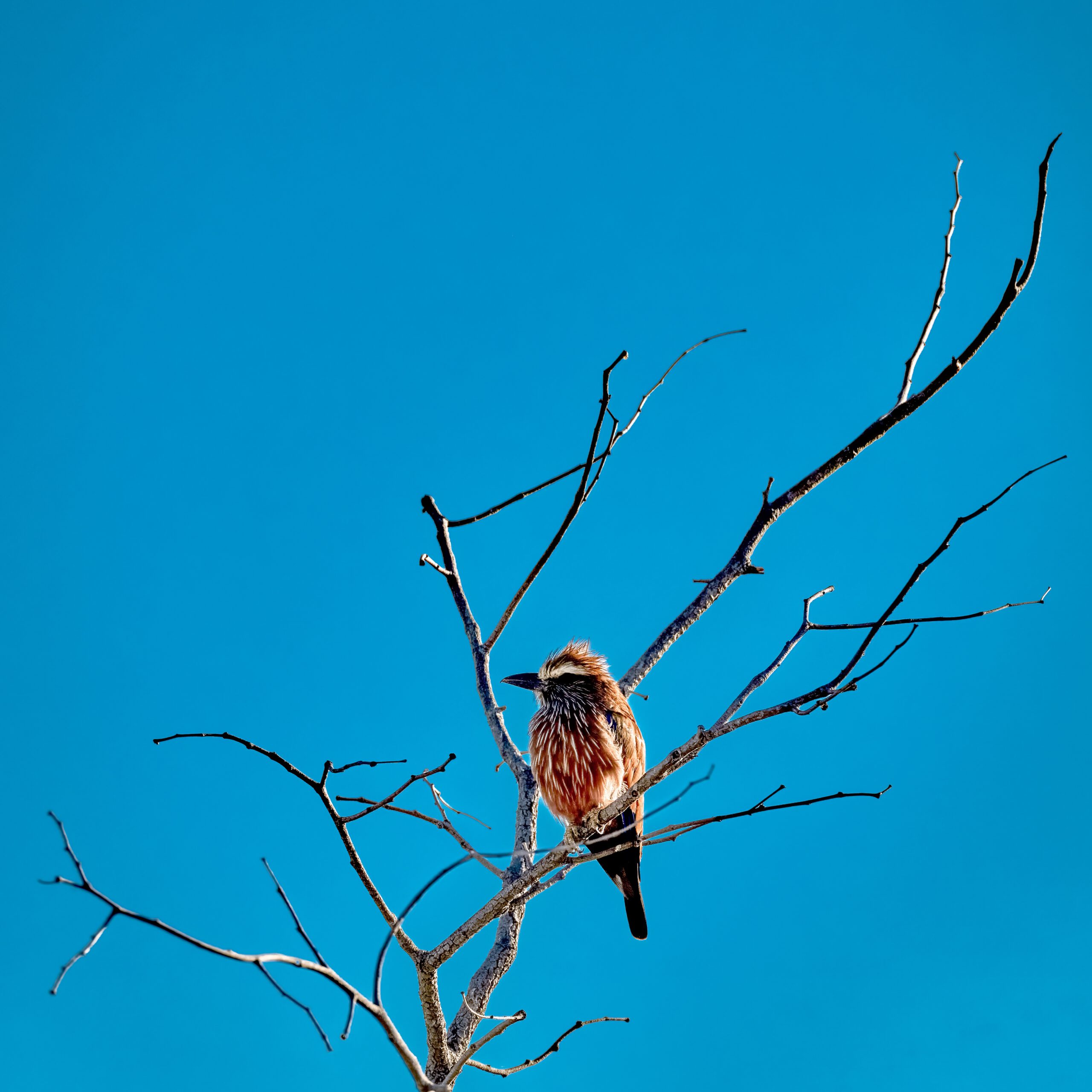MovingCamera
Photography & Travel
/// Photo trip Namibia
Namibia. A trip I would have liked to have taken in 2021. However, the trip was postponed due to Corona travel regulations. Now it could take place in May of this year. The trip was organized by photographer Stefan Liebermann, who is also the Sony Ambassador to Germany, as a 15-day workshop in collaboration with Richard Morsbach, a local tour guide.
Namibia is located in the southwestern part of Africa. With an area of around 825,000 km², it is twice the size of Germany. Namibia not only impresses with its species-rich animal world. There you will also find the oldest desert in the world, the Namib, with an area of 81,000 km² and its famous Dune 7, with an incredible height of 130m.
Our 12-strong international photo troupe met at the start of the trip at the airport in Windhoek, the capital of Namibia. Within a few hours we all gradually arrived. While we were waiting for our completeness, some money was exchanged (Namibia dollars ( and those who wished could get a prepaid SIM card. Our group was divided into 2 safari vehicles. So we all had quite an airy space. Our luggage came in in a separate trailer. Coarse photo luggage and tripods were stored in the side storage areas of the vehicles. Everyone had the classic photo backpack with camera and lenses at their place.
So we set off and headed for our first destination, the legendary Quiver Tree Forest, northeast of Keetmanshop. After 5 hours of driving and a short break for refreshment, we reached our destination in time for sunset. Overwhelmed by the sight of this extraordinary plant species from the aloe genus, also known as dragon tree aloe, which I had never seen before, I had to collect myself first. An experience one could hardly get enough of. The sight of this plant is fascinating in its unique presence. The pointed massive leaves are majestic as they rise towards the sky in a star shape. The massive and solid trunk seems to be up to any wind and storm. The dress of its bark is finely scaly. Wherever I looked, every single tree, a beauty. In the midst of this very barren, sandy and rocky area, the Quiver Tree Forest emerges with its 250-300 quiver trees, which was declared a national monument in 1955.
Then the time had come and the setting sun bathed the trees in a reddish-golden light, which I could never have imagined.
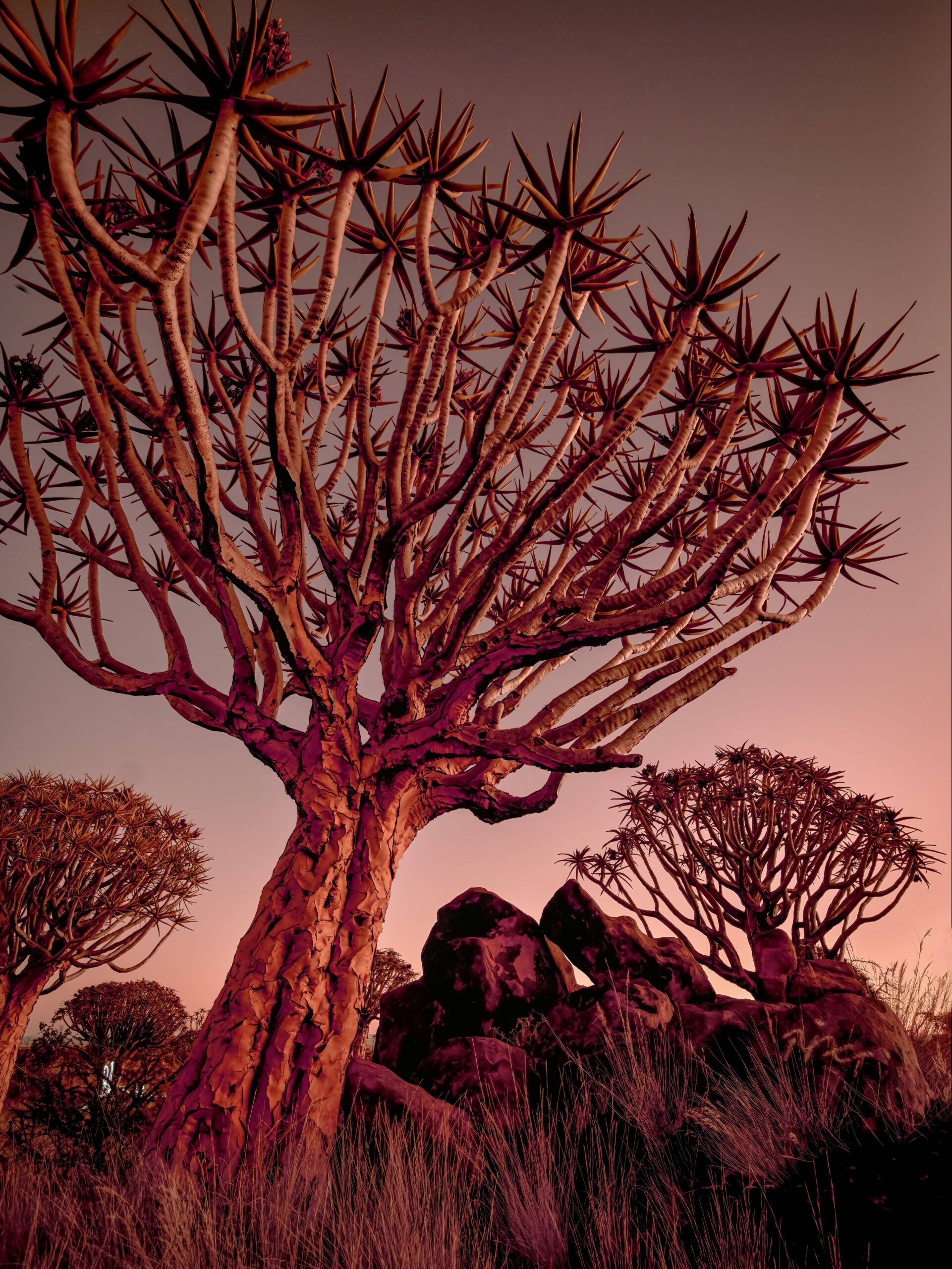
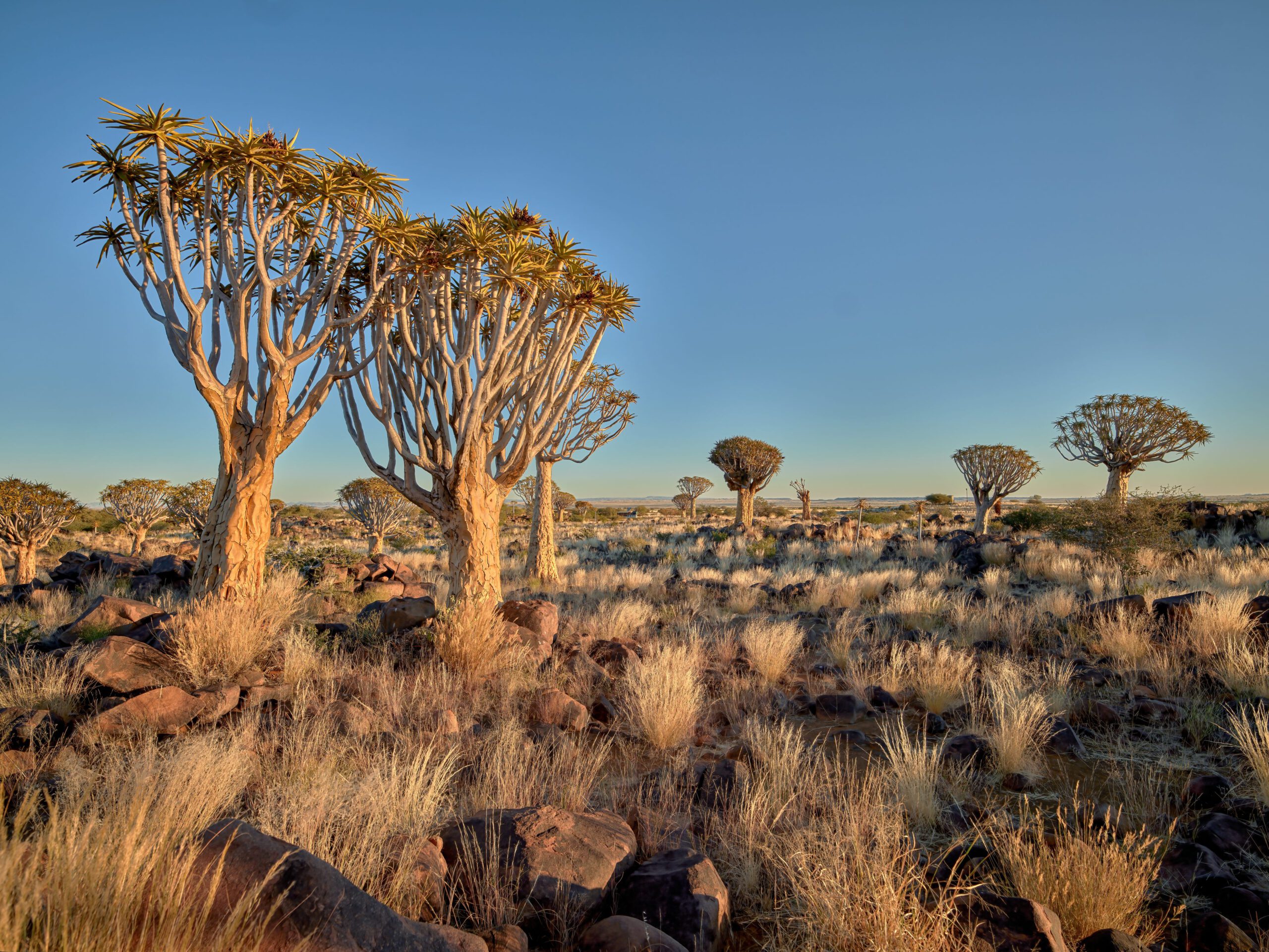
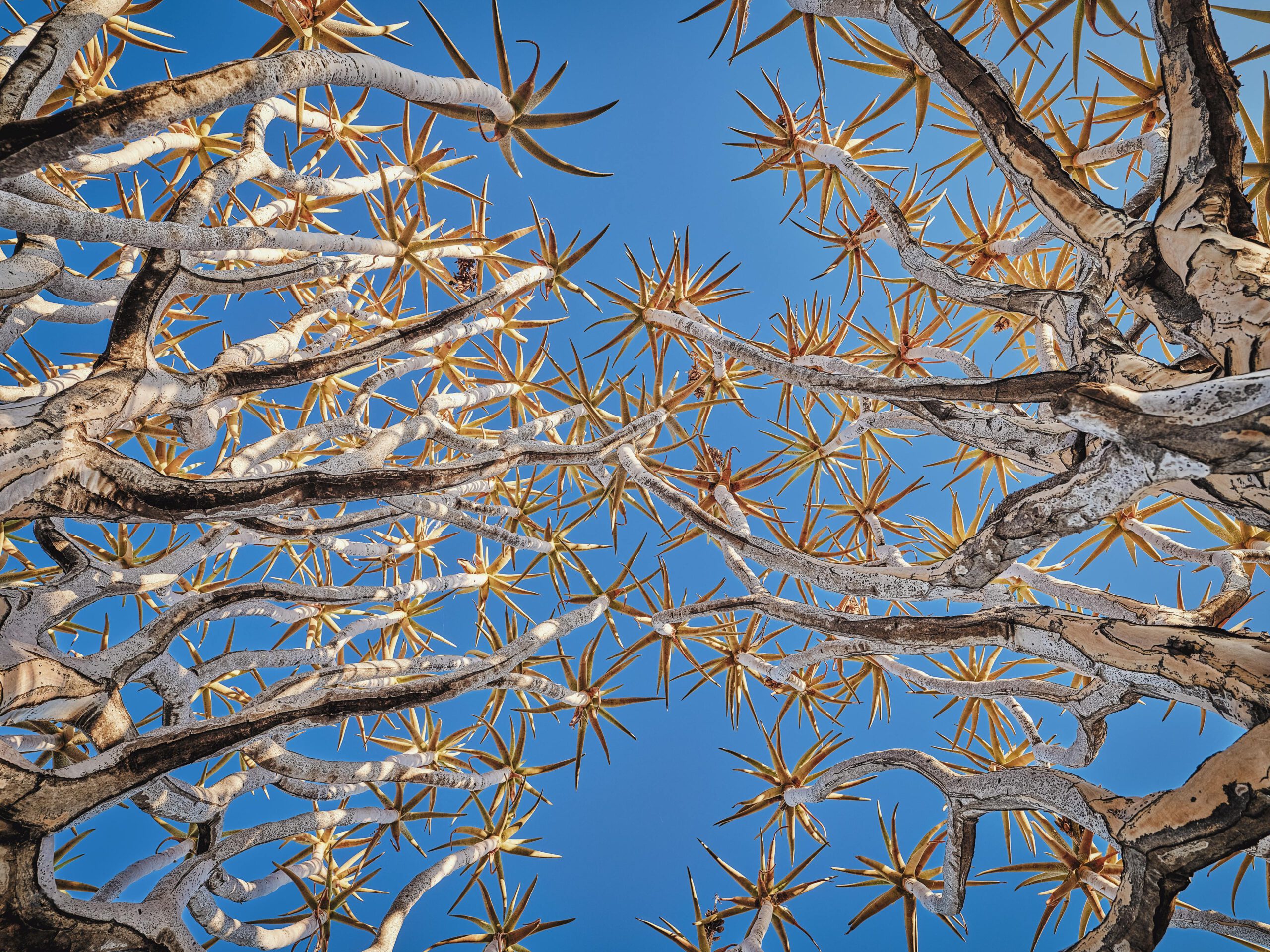
The next morning, with the rising sun, we had another opportunity to experience the Quiver Trees in a completely different light, at sunrise. A pleasure that for the most part we all did not want to be denied. For me as an early riser it was one of my easiest exercises anyway, I was able to have breakfast later in peace. So we spread out generously in the middle of the forest to once again capture the beauty of the quiver trees. Excited and very impressed, I ran around everywhere, taking my pictures and photographing the others in their element. Photographing people is still a special passion of mine….and I was sure that after the trip, especially pictures where you are on it yourself will awaken a special memory. It’s always great when you’re not even aware that you’ve been caught on camera. Here you didn’t need to ask for prior permission, as I usually do. Right from the start and throughout our trip, we were a real photo family. That’s how I would describe it.
After we then went to have breakfast and stow all our luggage, we left happy and satisfied to the Fish River Canyon. This canyon is located in southern Namibia. At around 160 kilometers long, up to 27 kilometers wide and up to 550 meters deep, it is the largest canyon in Africa and is the second largest canyon on earth after the Grand Canyon. We had a good 7 hour drive ahead of us, we had a 430 km route ahead of us. I should mention that only small sections of paved road were available to us here. For the most part we drove over dusty and rather rocky slopes. Not to forget, one of our vehicles had to pull the trailer with all the luggage. Richard, our local tour guide, drove one of the vehicles. Lazarus, our local companion, drove the wagon and trailer.
On the way we took a short break to eat something. Because the viewing point at the canyon must be left by 7:00 p.m. at the latest. This is definitely controlled by patrols. We reached the checkpoint around 5:30 p.m. and were able to pass it quickly. From there it was about 10 minutes to the first vantage point, then drove to the second vantage point because of what was probably an even more beautiful view. Once there, we walked up to the rim of the canyon with cameras and tripods and enjoyed a fantastic view of this impressive canyon while taking pictures.
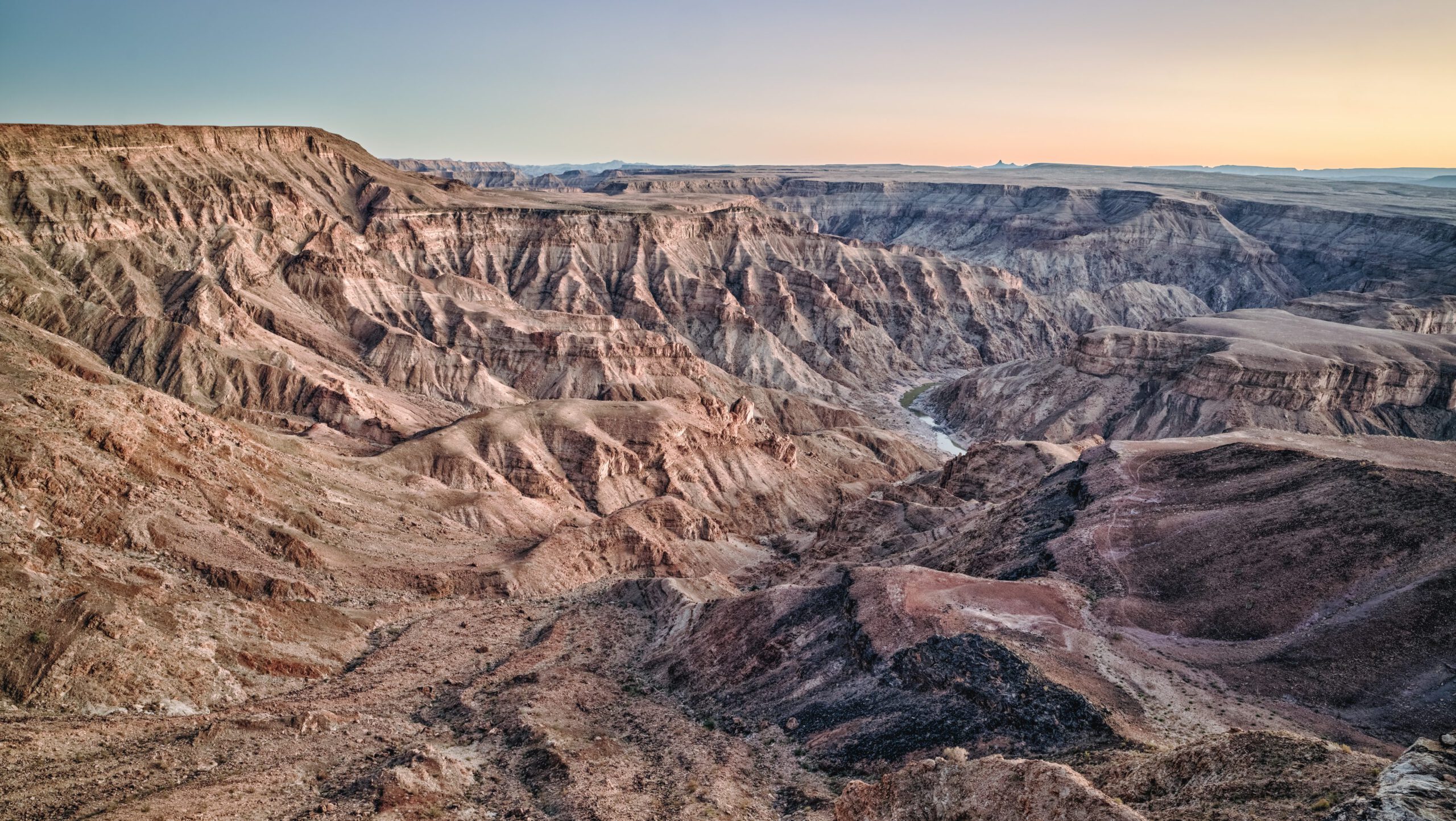
Actually, we should all have been exhausted when we got back to our accommodation from the Fish River Canyon, especially since the days and nights are filled with all kinds of activities. Sleep is coming because in an hour we wanted to meet again for dinner. Everyone went back to their bungalow, which was beautifully embedded in the landscape, to freshen up. I even had time to save the pictures I had taken on a separate hard drive. Although I was well equipped with memory cards, of course I didn’t delete any of my cards after the backup. What can make more sense than having a second backup of the pictures taken up your sleeve. At the same time I charged my batteries.
I use one of my travel adapters for this. Because in Namibia the sockets type D and M are used. I connected the power strip I brought from Germany to it. So I could load many things at the same time. I’m really well organized as far as all this goes and have everything with me to be prepared for most things. In the end it was definitely not wrong, because I was able to lend a few things to the photo group that one or the other was still missing.
As we gradually took our seats at our huge long table, it was a pleasure to sit in peace. Without a camera, let the day pass in review. There was an enthusiastic exchange, not to mention raving. While the food order was being placed, many were already ordering their second drink. It was wonderful to sit there on a warm night with the lights dimmed and to feel how particularly comfortable everyone felt. A togetherness that couldn’t be nicer. Now that we were all sitting together so beautifully, it made sense for our two organizers, Stefan and Richard, to speak. Stefan explained the possible process for the astrophotography that is still taking place today. When and where we wanted to meet, who was going with him and who was going with Richard. Stefan Liebermann is an internationally awarded landscape, night and passionate astrophotographer, a special kind of guy who is very familiar with stars, space and their galaxies…..not to mention the use of technology.
So it started in the middle of the night. Namibia is predestined to do night and astrophotography in addition to everything that can be photographed during the day in terms of landscapes and wildlife. There are only a few places in the world where the Milky Way can be seen as significantly and clearly as here in Namibia. Far away from light pollution, in the immediate vicinity, the emission of infrared light from a headlamp is enough to destroy a picture. Especially if you are not alone there, you have to be very careful not to screw up the nice long exposure of the next person.
What is also worth mentioning is that Stefan really took his time with each individual and showed me which settings were required on my camera. This includes the tilt angle of the camera as well as the manual focusing of a point and the distances at which the camera had to be panned on the horizontal axis in order to achieve a successful overlapping of the images. Although I was able to gain some experience with astrophotography in Brazil a few years ago, it wasn’t as extensive and intensive as we are here. This is how my first portrait format panorama was created, consisting of 6 shots. Pure enthusiasm and fascination.
For me it was an intoxication to look into the vastness of the universe and to have the feeling confirmed that infinity begins here. I have never experienced the universe with its Milky Way in such dimension and clarity. I was just happy to be able to experience that.
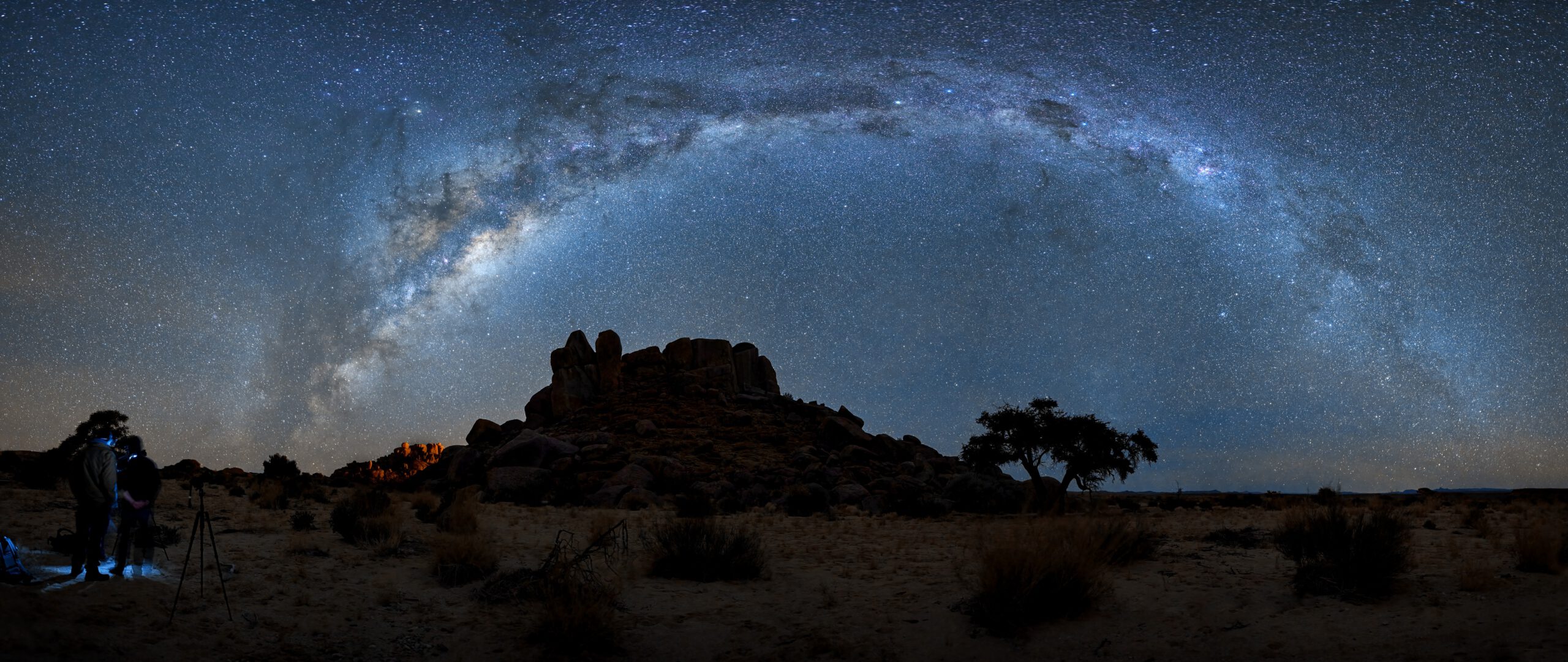
At the gates of Sossusvlei and not far from the Namib Naukluft National Park was our accommodation, a spacious lodge, to the next day Namibia’s World Natural Heritage region with the highest dunes in the world, and the equally famous Deadvlei, a small clay pan surrounded by dunes in the Namib -Sand Sea to visit.
But this evening, the first thing to do was to arrive. Because we had already been on the dusty roads for hours. After our seven things were in the bungalow, it was time to freshen up and later to come together for dinner together, in a nice atmosphere, outside on the terrace at a huge table.
The sun had already set and the remaining light on the horizon wrapped the expanse in front of me, including the mountain formation, in a graceful evening atmosphere. There was an unbelievable silence, I only heard the chirping of the crickets and the subtle noises of some insects. Balm for the soul.
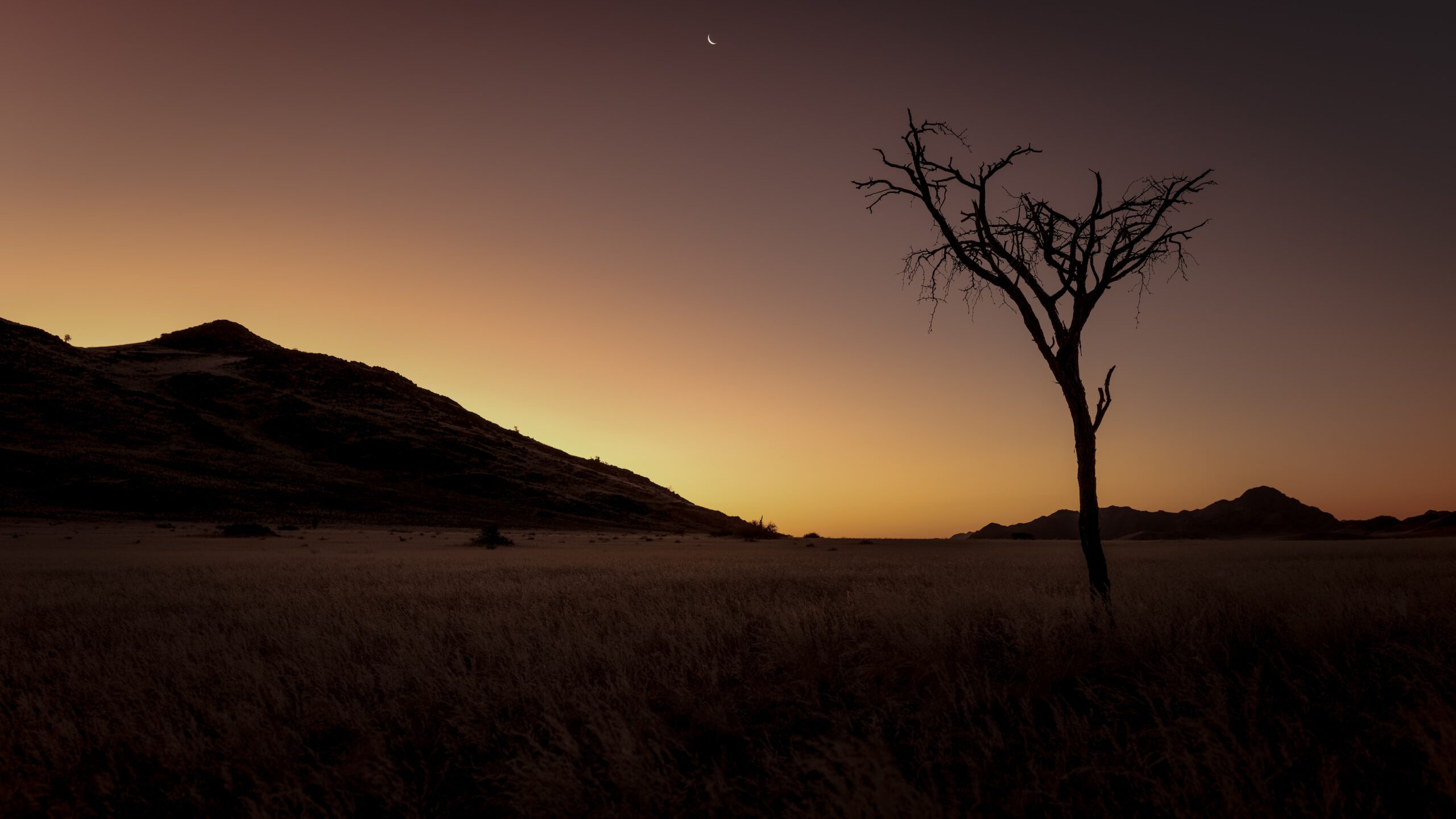
After our dinner it was time to relax a bit, because for the night it was time to get up and go again. astrophotography. Some of us fanned out, others, like me, used our lodge and bungalows to stage them together with the Milky Way.
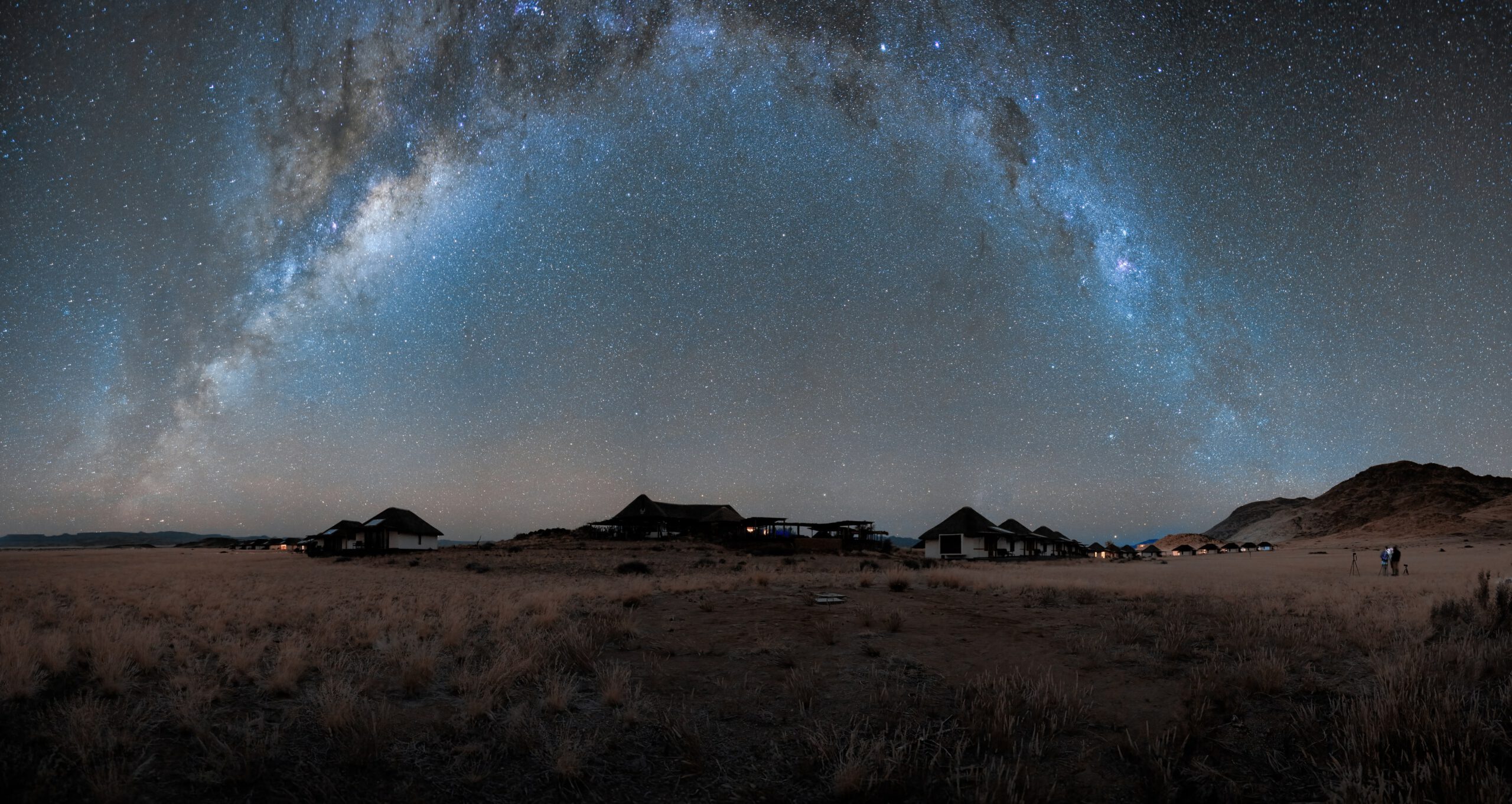
We started early in the morning, right after breakfast. Death Vlei was about 90 km from our accommodation, just over an hour’s drive. The temperatures were still quite bearable at the beginning, but that didn’t stay that way. Because one thing was certain, the sun would already get going in the morning and use all its power without hesitation, mercilessly affecting everything that wasn’t in the shade.
I deliberately did without my baseball cap. Even before the start of the journey, I had bought an airy, spacious hat as a precaution, which above all completely shielded my face and neck. Long-sleeved shirt and sunglasses are essential. Sturdy shoes should be considered, as this makes walking in the sand much easier. Richard, our experienced guide, repeatedly drew our attention to the dangers that such a tour would entail. Especially dehydration!! The body literally dries up. So drinking is a must. My drinking bottle with 1½ liters of water seemed a lot at first. However, if you are there for 4-5 hours, you quickly realize what it means to not carry enough water with you.
When we arrived at the entrance to the park, we joined the car convoy. It looked as if it would be well attended, but then due to this huge region, but absolutely lost. Even if the Sossusvlei in particular is very busy, it didn’t seem overcrowded. People came and went. Since there was almost no shade, especially when approaching midday, you wouldn’t stay there too long anyway. After we had passed the entrance to the park, we only drove through sand past many smaller dunes. Here you had to drive quickly, no chance without all-wheel drive. Anyone who gets stuck here has hardly any chance of getting free again on their own. So we got to a large parking lot, where we could even get out again and then our walk to the actual goal, the Death Vlei, where the world-famous dune „Big Daddy“ is to be found. It is considered the highest dune in the area and one of the highest in the world. Big Daddy is said to reach a height of 325 m to 380 m. Passing this huge dune towering in front of us, we then saw the salt-clay pan surrounded by dunes, in which the dried and completely dead ca. 850-year-old camel thorn trees together with their remaining branches gave their world-famous picture.
Pure fascination. Incredibly surreal. In addition, the light, which became increasingly glaring. The shadows cast on the ground by the dunes and the dead trees grew shorter and shorter towards midday. If you are here very early in the morning or late in the evening, you will undoubtedly find the most beautiful lighting conditions. However, even outside of these times, Sossusvlei enchants with its unique formation and colors that are constantly reinventing themselves. A really unique but also very exhausting experience. Well mastered thanks to appropriate preparations. It will remain unforgotten for all of us, perfectly immortalized in our heads as well as on the chip.
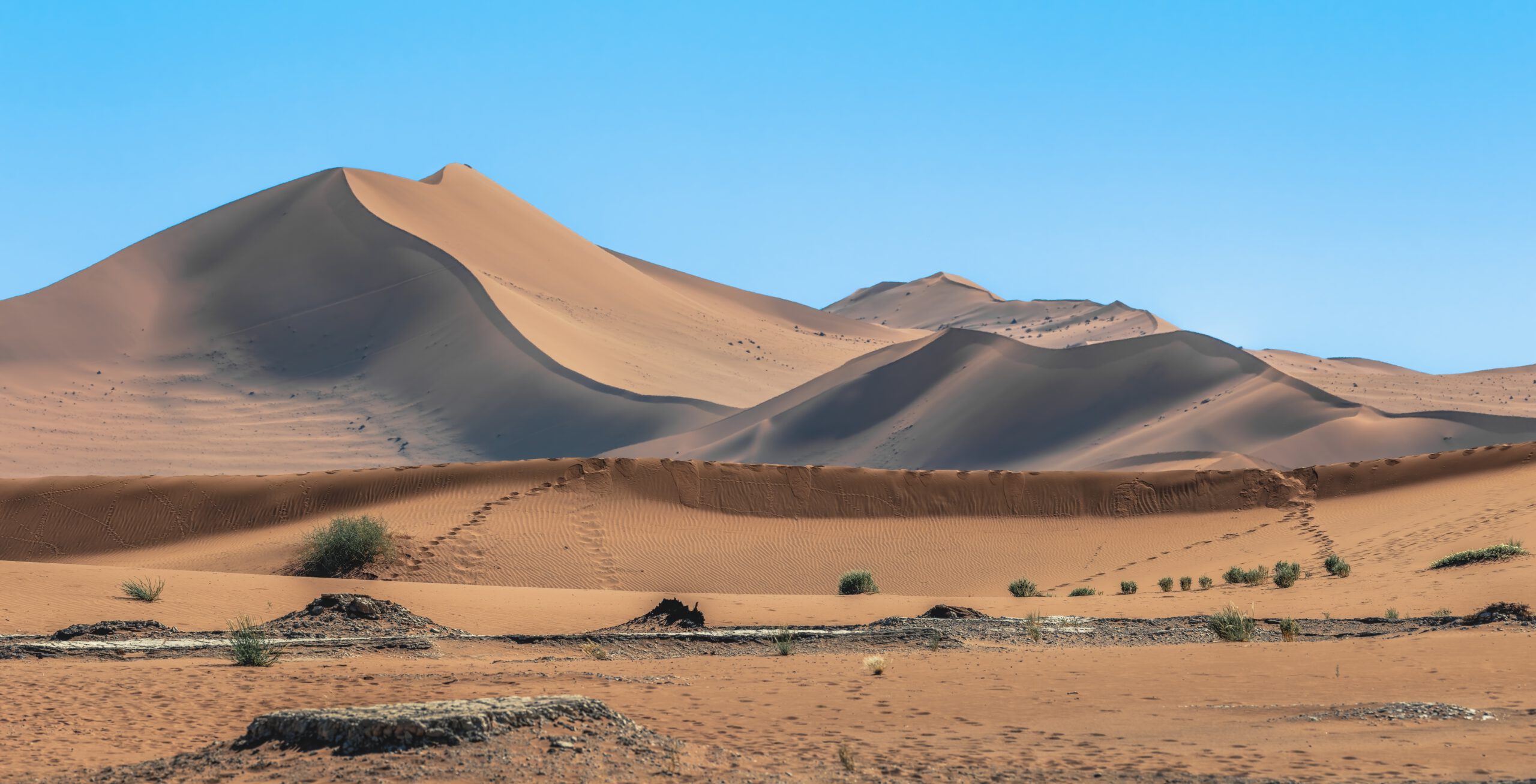
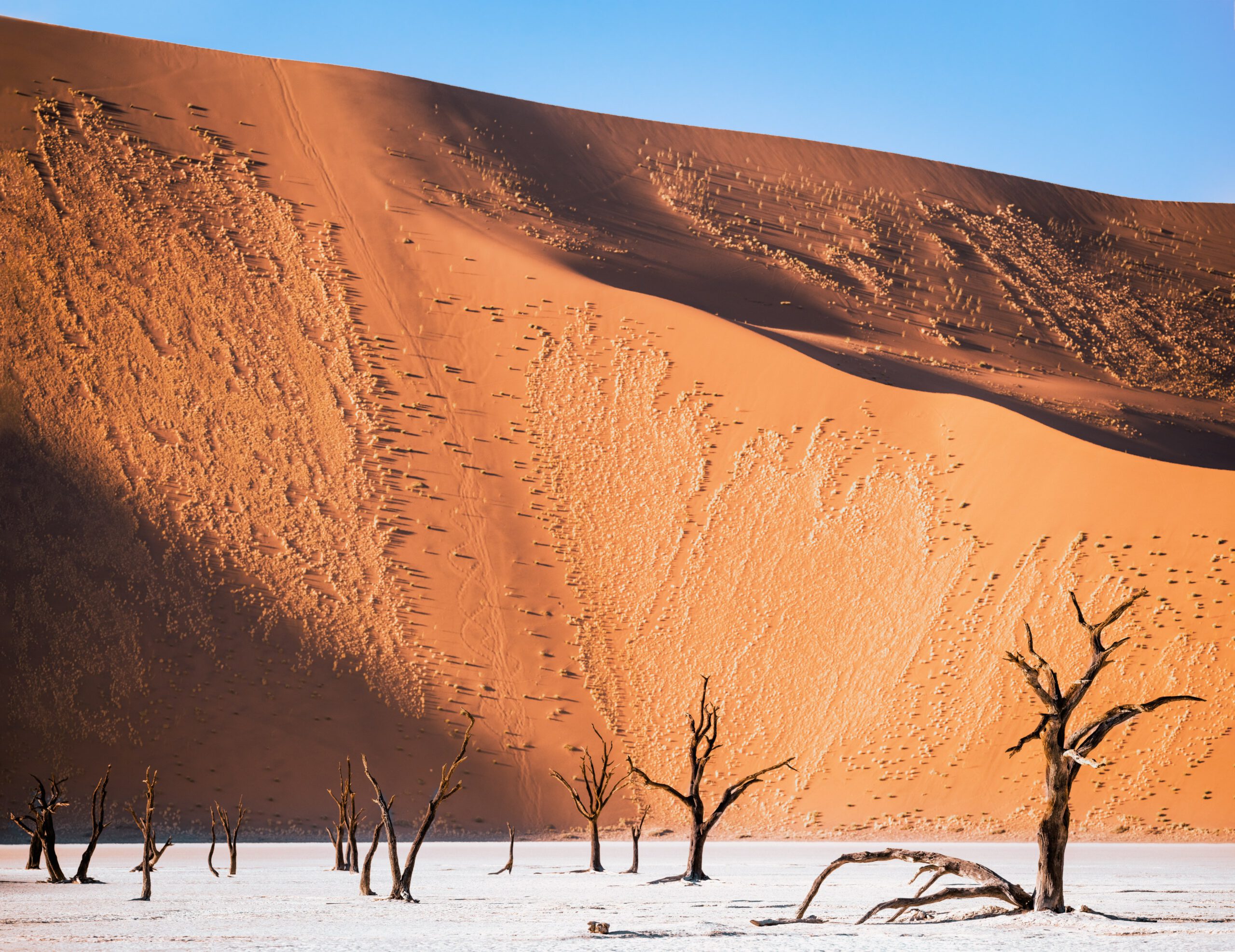
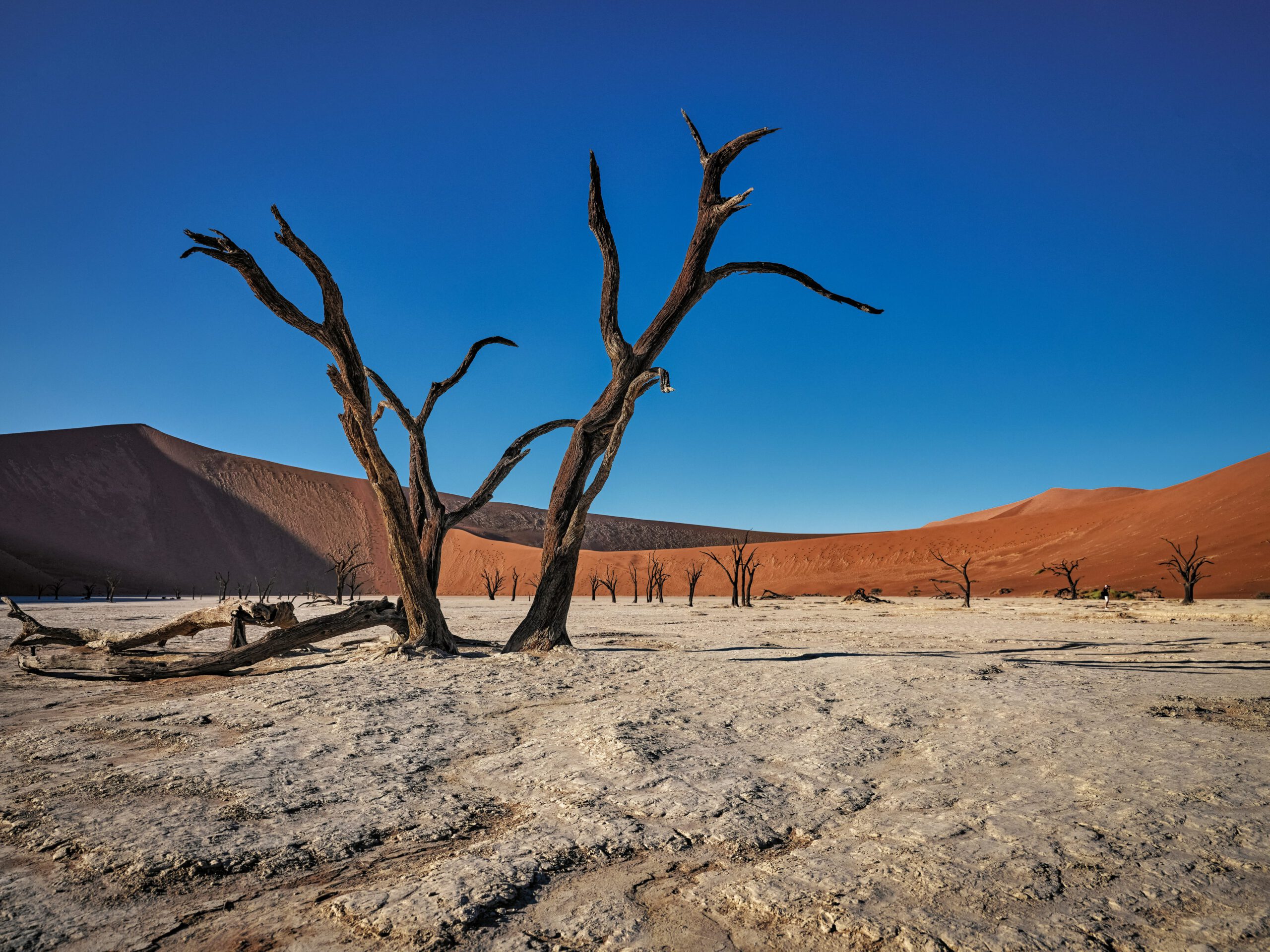
The sun threw its light inexorably on the desert landscape with its dunes, grass and its weathered trees. The shadows were still long and produced such a wonderful play of light and shadow that I simply couldn’t resist. The direct incidence of light rays on the camera lens creates the lens flare effect, which I like and which in no way prevented me from getting very close to the dune to create this picture.
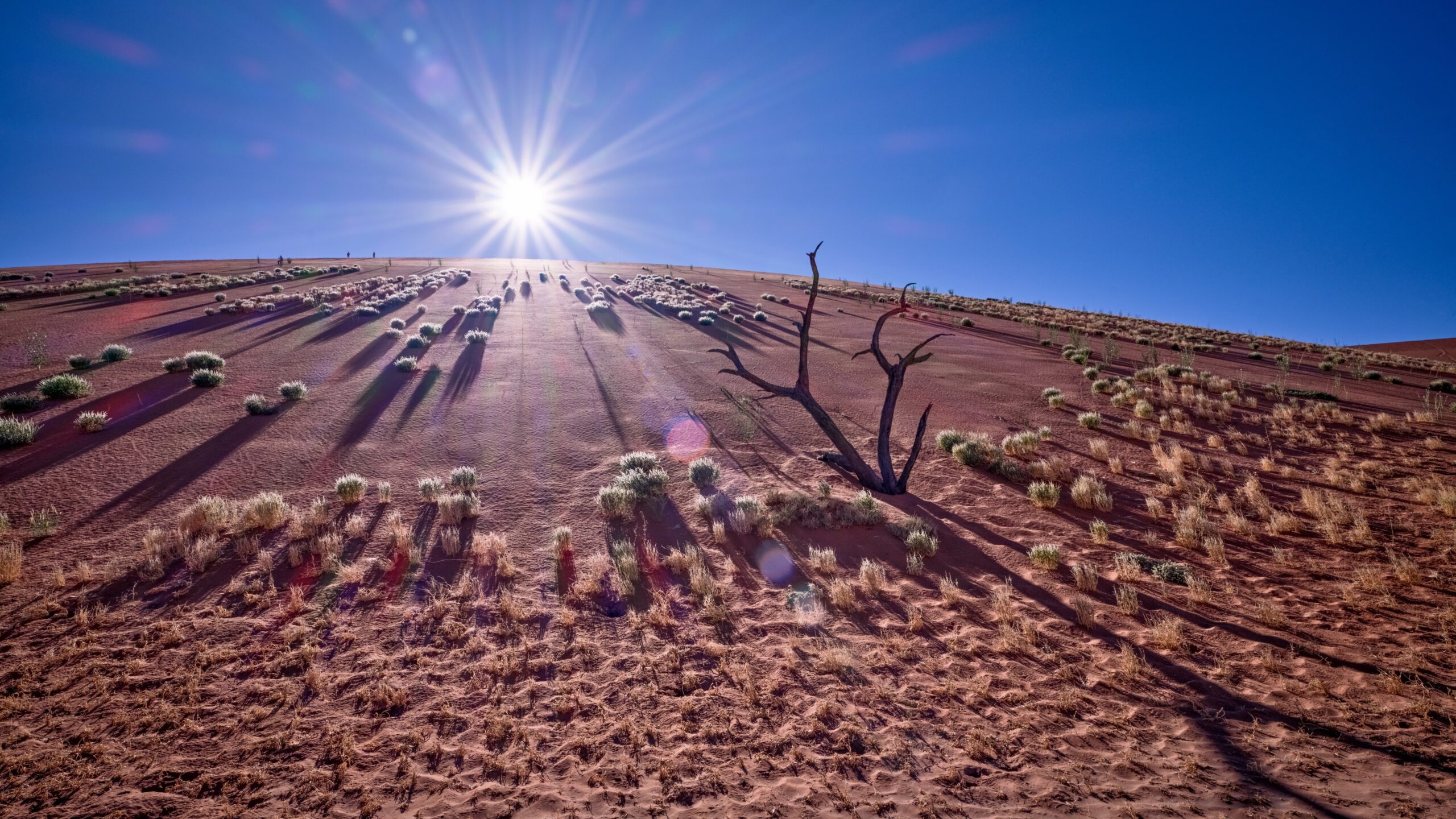
We were lucky enough to be able to do a sightseeing flight in a small helicopter over the Namib-Naukluft National Park. It is breathtaking to see the unbelievable beauty of the national park and what is happening from a dizzy height.
It was a bit of a queasy feeling at first, even though we were strapped in tight. On the side there was no such thing as attachments, however, it was ideal as you could take pictures freely without looking through any glass other than the front screen.
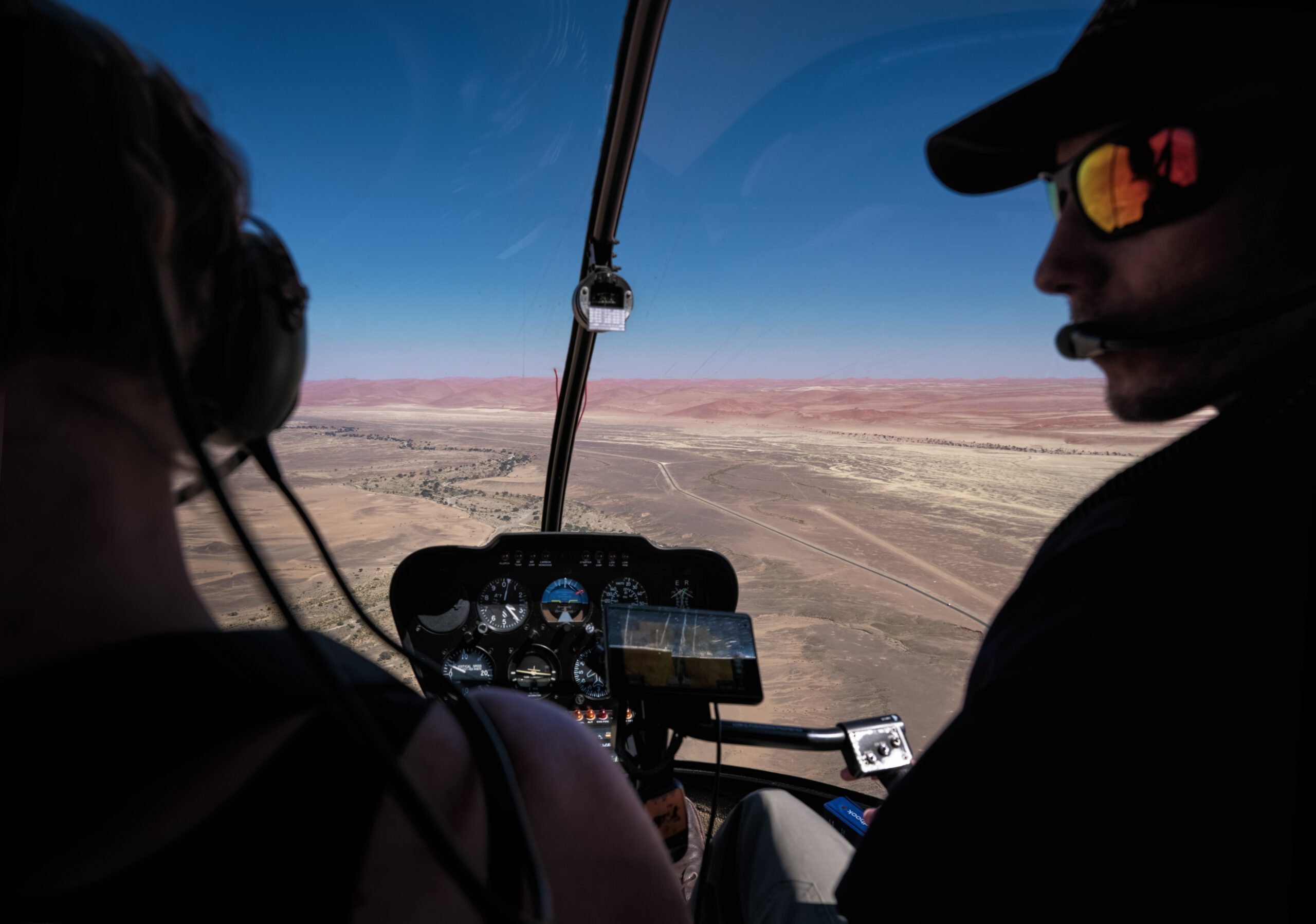
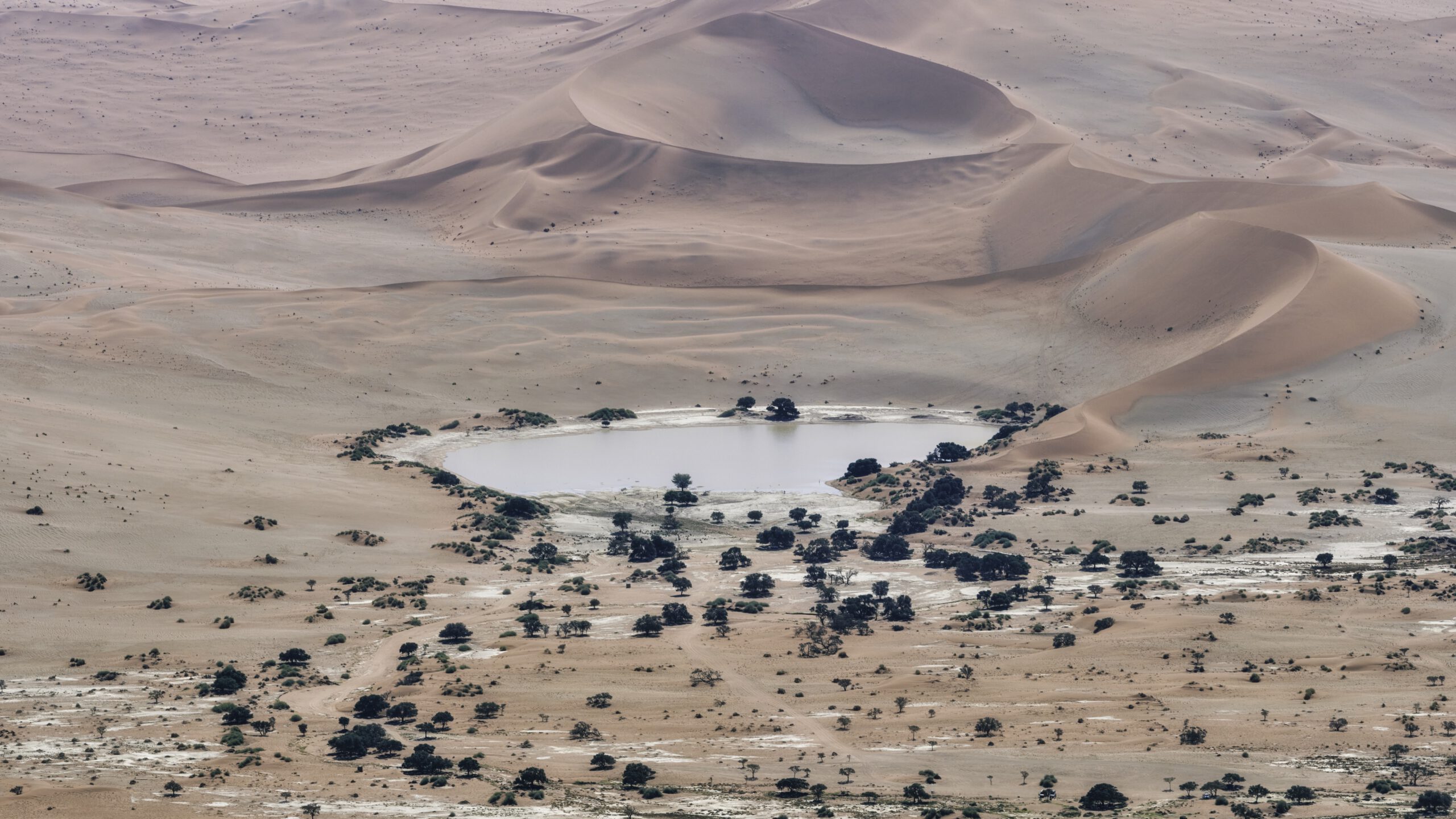
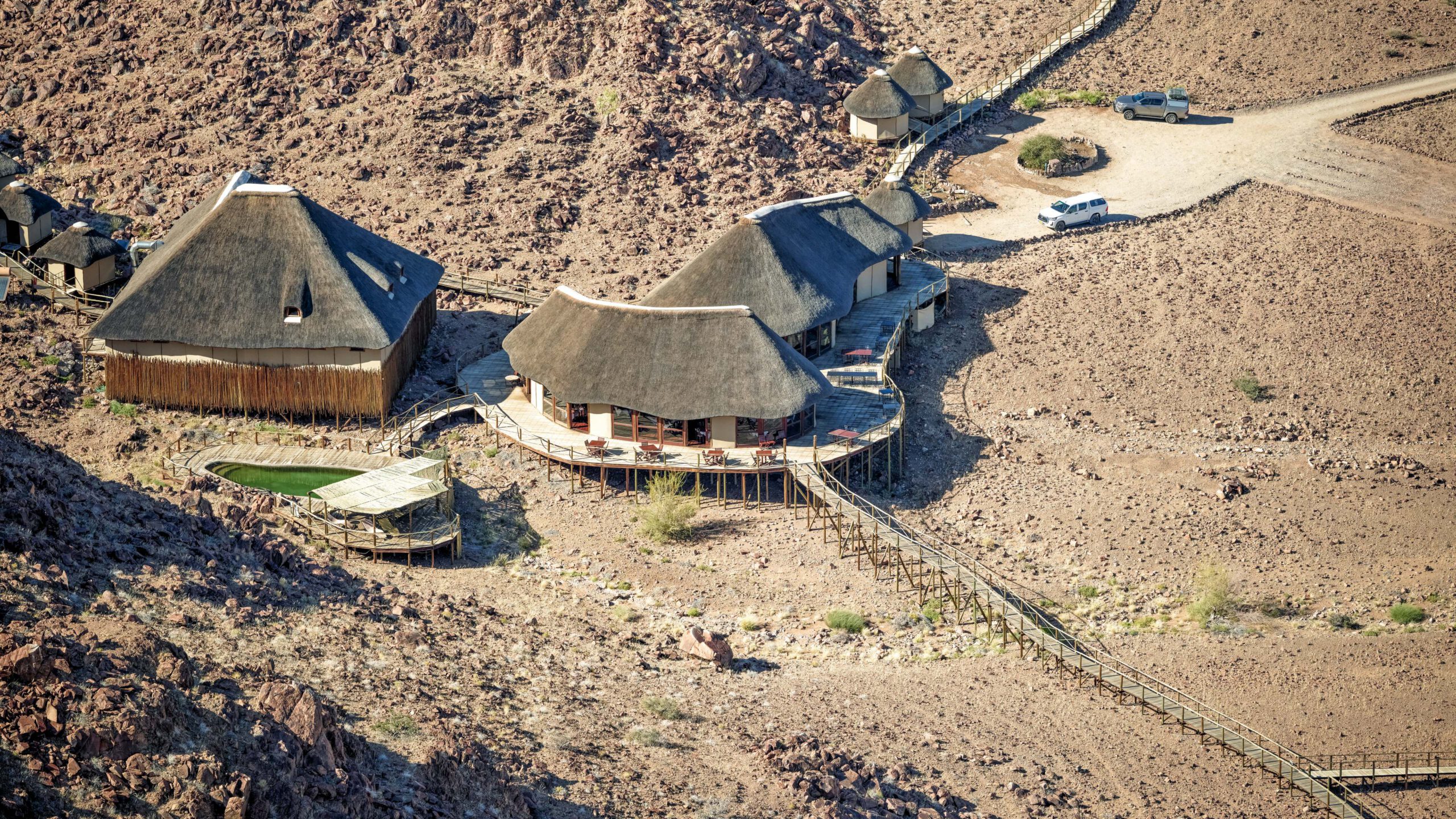
The abandoned city of Kolmanskop, which presents itself in the architectural style of a German city, is located about 10 km east of the port city of Lüderitz in the Tsau-Khaeb National Park. The city was built during the diamond rush in the Namibian desert after 1908. However, the successful search for diamonds did not last long. From the beginning of the 1920s, more and more diamond diggers slowly but surely left the city. From 1956 onwards the settlement was completely uninhabited and the desert took over the administration alone, taking what was left of it.
A short journey through time awaits the visitor, a glimpse into the past. An Eldorado for photographers and a must for lovers of lost places.
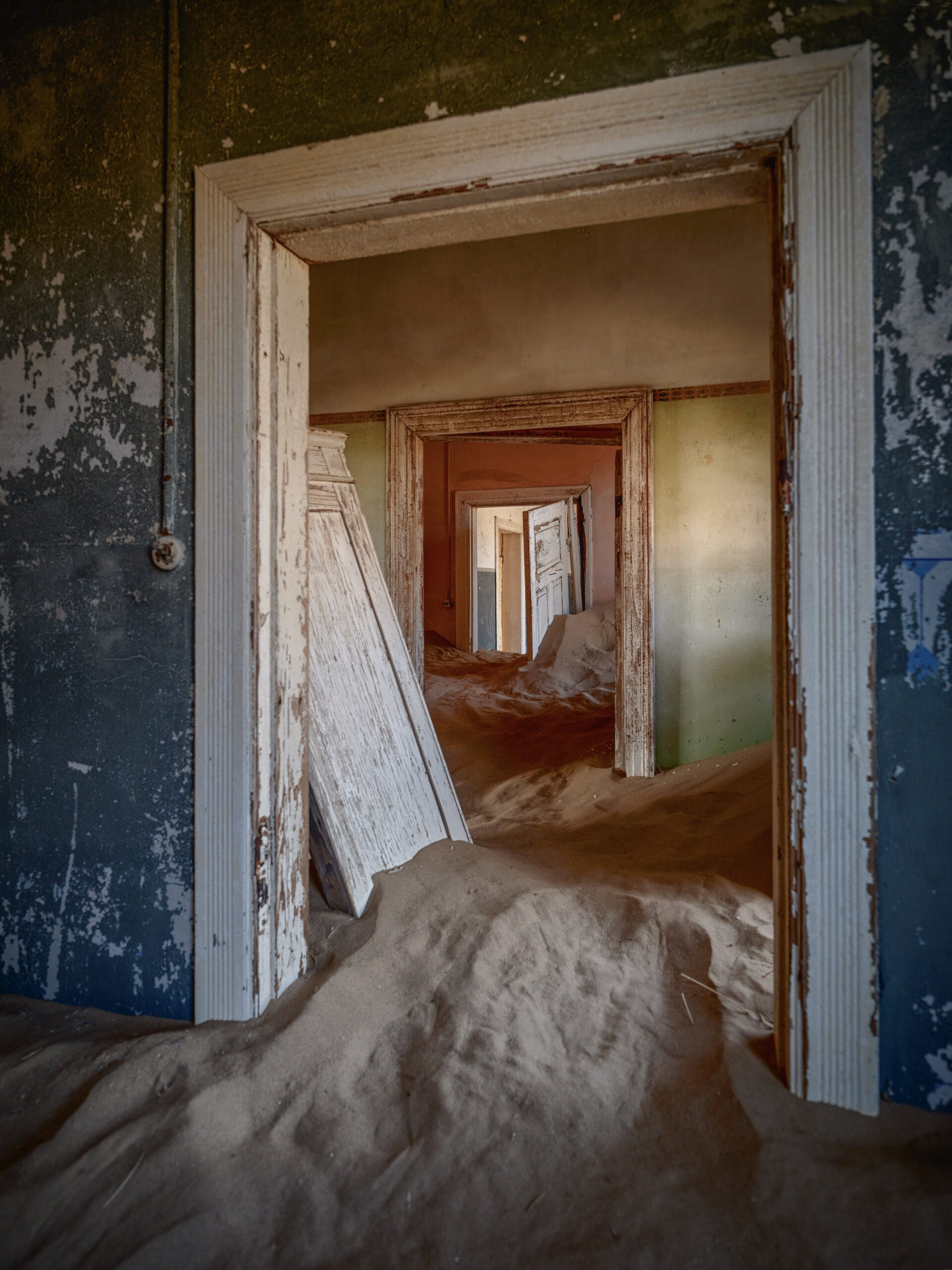
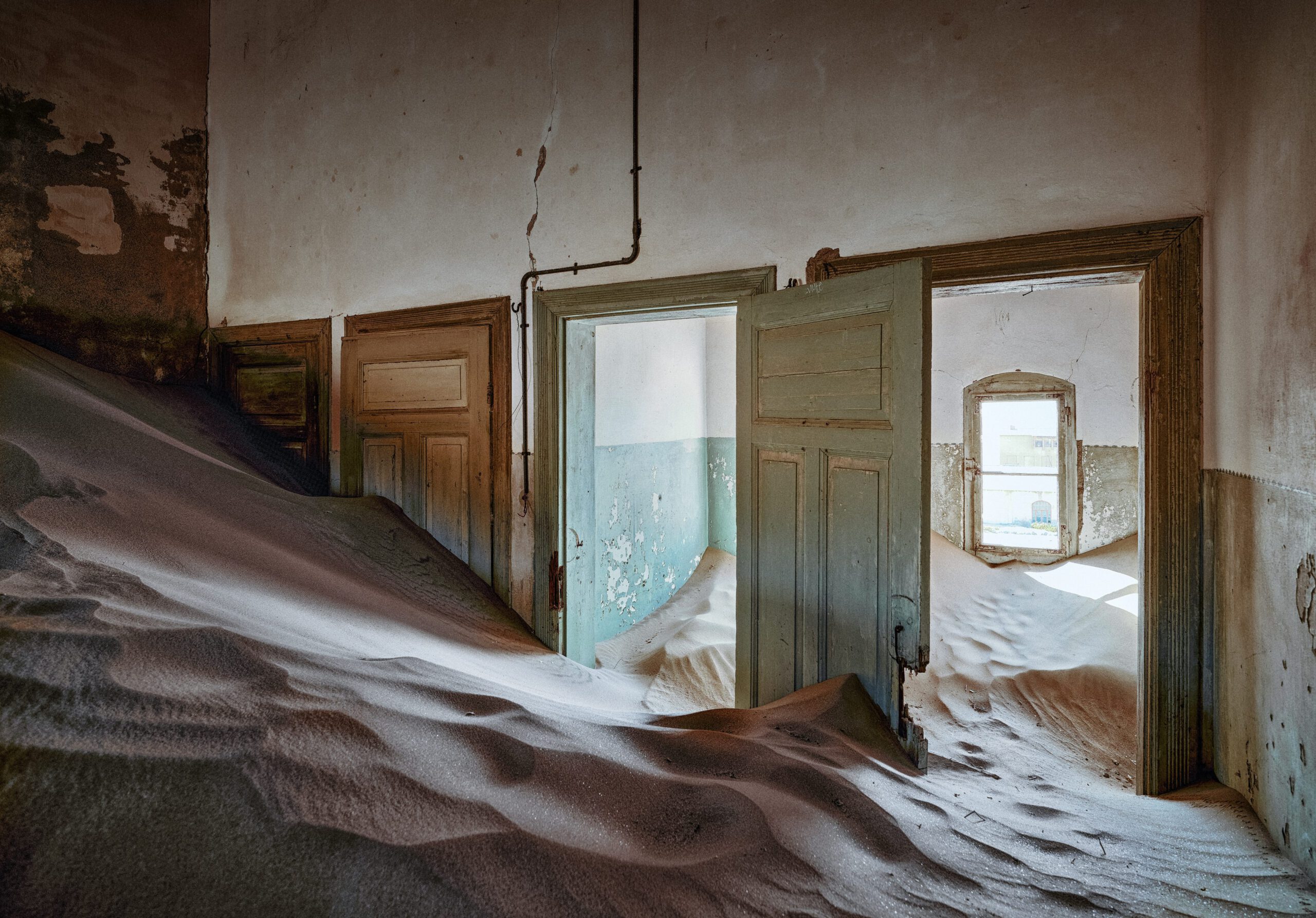
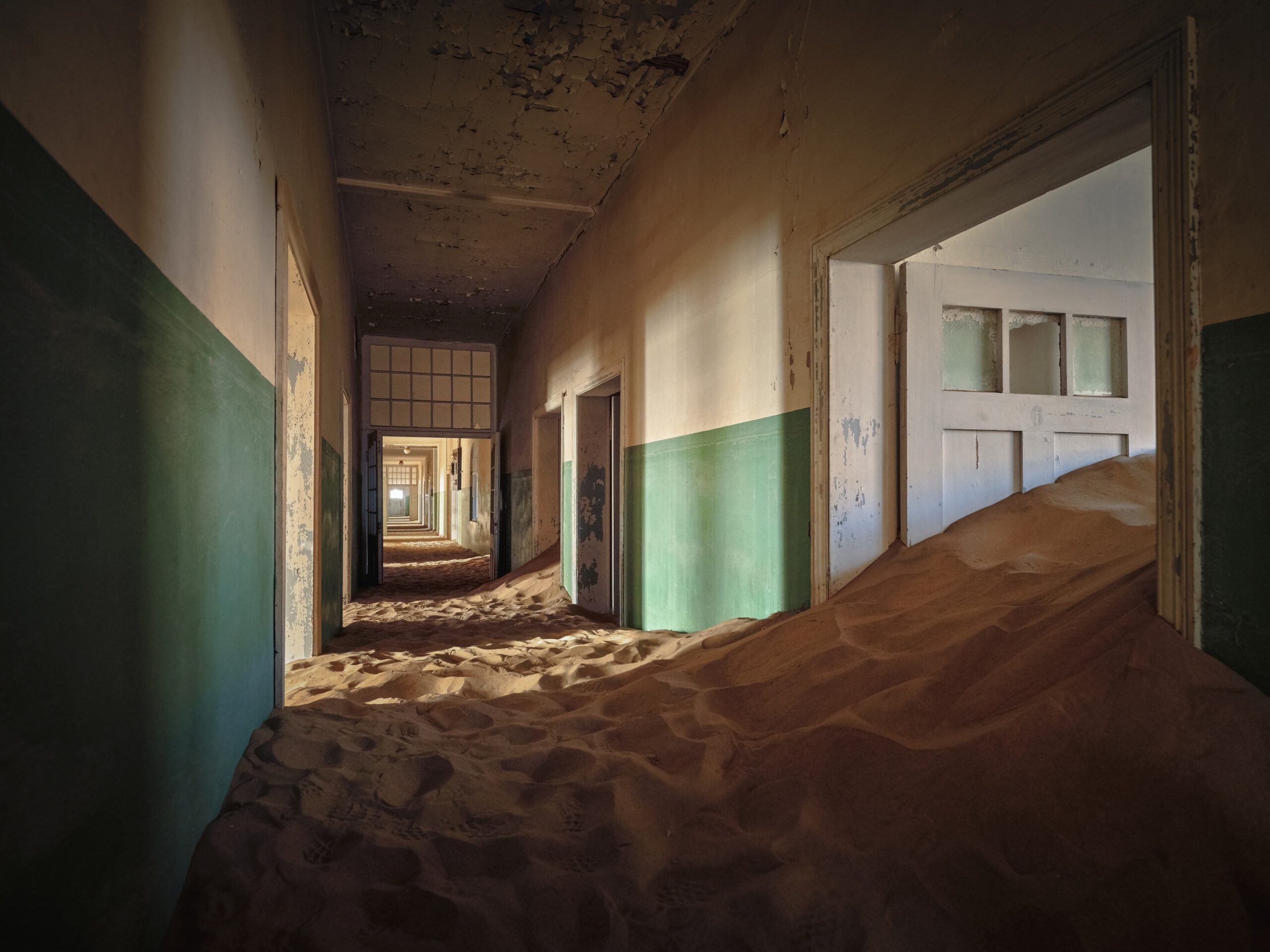
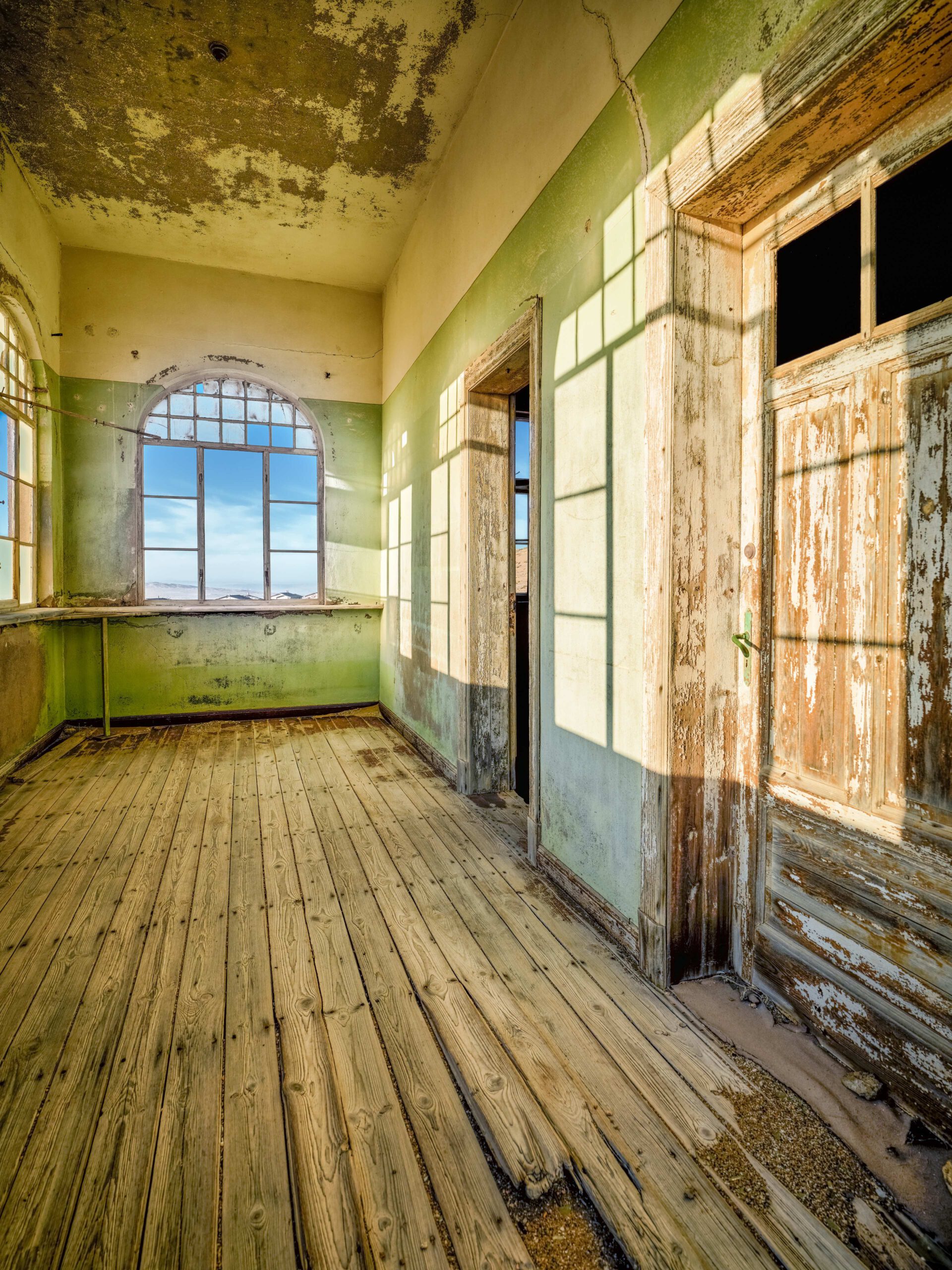
Breathtaking to see the incredible beauty of the world’s oldest desert from above. Below us the magical spectacle of the rolling, red dunes of Sossuvlei stretched out into infinity amidst the wind-sculpted landscape. It was only from an aerial perspective that it was possible to capture all the magic this desert held above what was already there to be discovered from the ground. A real feast for the senses.
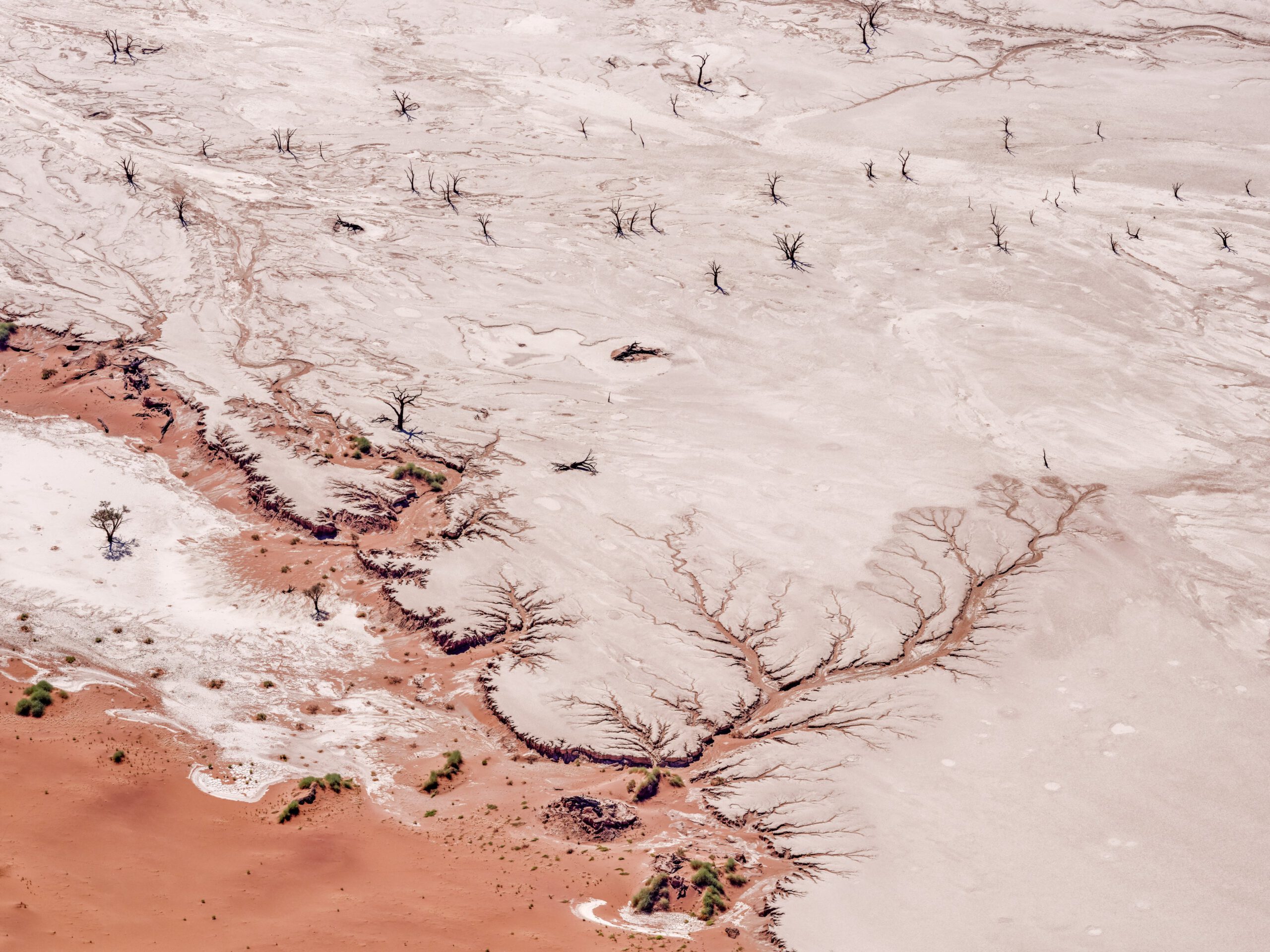
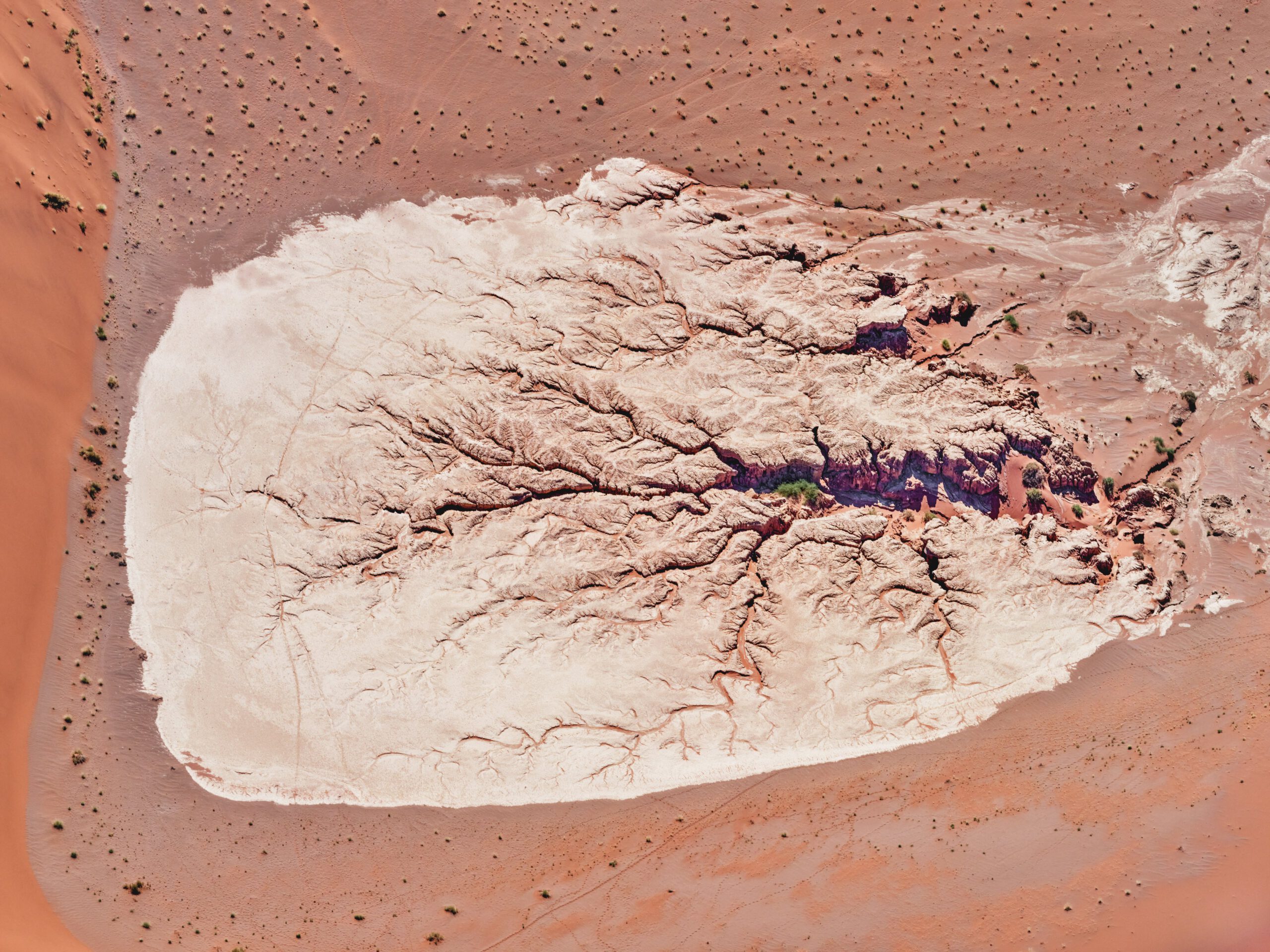
In the distance we spotted these huge Oryx antelopes, singly or in small groups, migrating through the desert in search of water and food. From the helicopter, of course, this resulted in a unique perspective that was impressive and unforgettable.
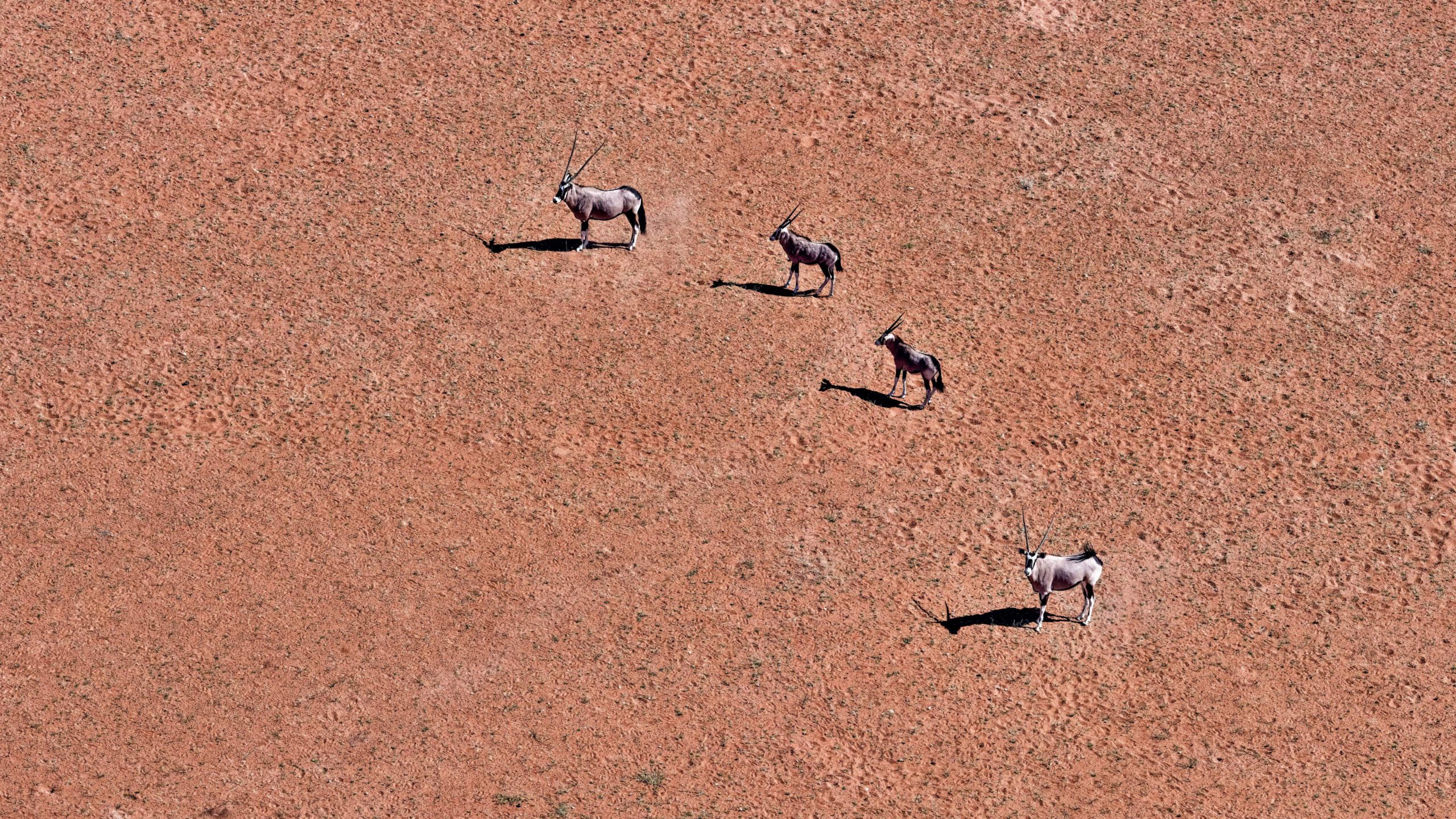
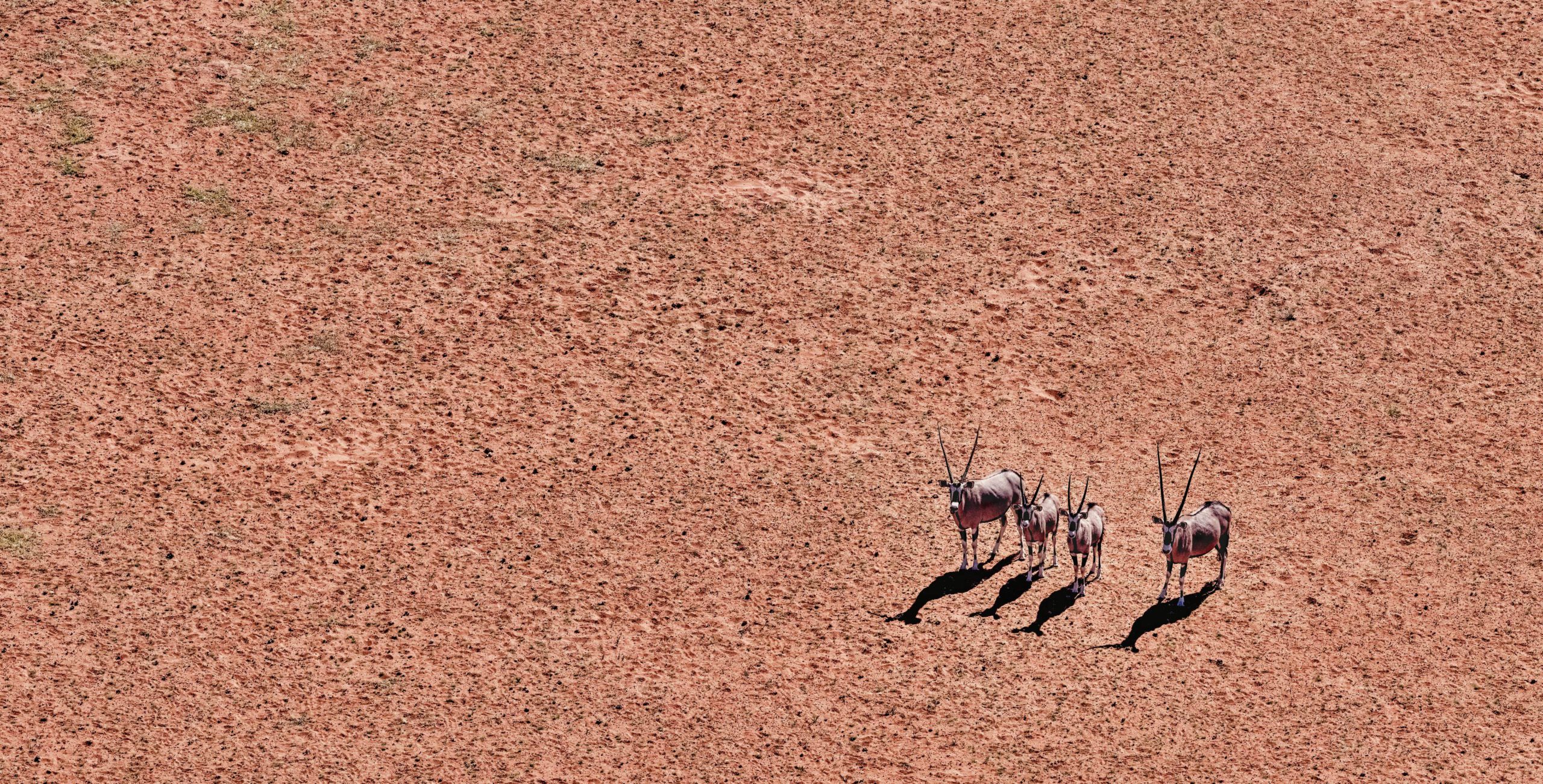
The next day it continued. After a more than 8 hour drive over mostly dusty gravel roads, we reached our destination. From a distance, the Spitzkoppe impressed, which due to its distinctive shape is also known as the „Matterhorn of Namibia“ and is probably one of the most photographed mountains in the country.
A dreamlike as well as extremely sparsely populated landscape awaited us, which dominated the mood with unique beauty and silence. It couldn’t be better than sleeping in a tent the night before. Arranged in a large semicircle, the individual tents lined up harmoniously in the barren and rocky landscape. Now it was time to settle down, freshen up and find a comfortable place around the campfire that had been prepared for the evening. All of this was well organized by outdoor specialists, who made special overnight stays of this kind possible, with a campfire, dinner, drinks, breakfast and shower and sanitary facilities.
Who would want to sleep there anyway? It was a successful evening. Everyone was deeply relaxed and after the meal continued to linger around the blazing fire, sipping drinks and chatting. For this night, astrophotography was on the agenda again. Small groups formed, planning to go at different times. After lying down for 2 hours sometime after midnight, my decision was to get up at 3:30 in the morning and then go out with others.
At this time, the Milky Way could be seen quite far above us, but that didn’t bother me any less. After all, I was concerned here with the holistic experience, which is entirely in line with my passion for photography. It was breathtaking, now that it was still dark, to look for a nice location to absorb the incredible beauty of the Milky Way in all its fascination, with spirit and soul, and finally to capture it with the camera.
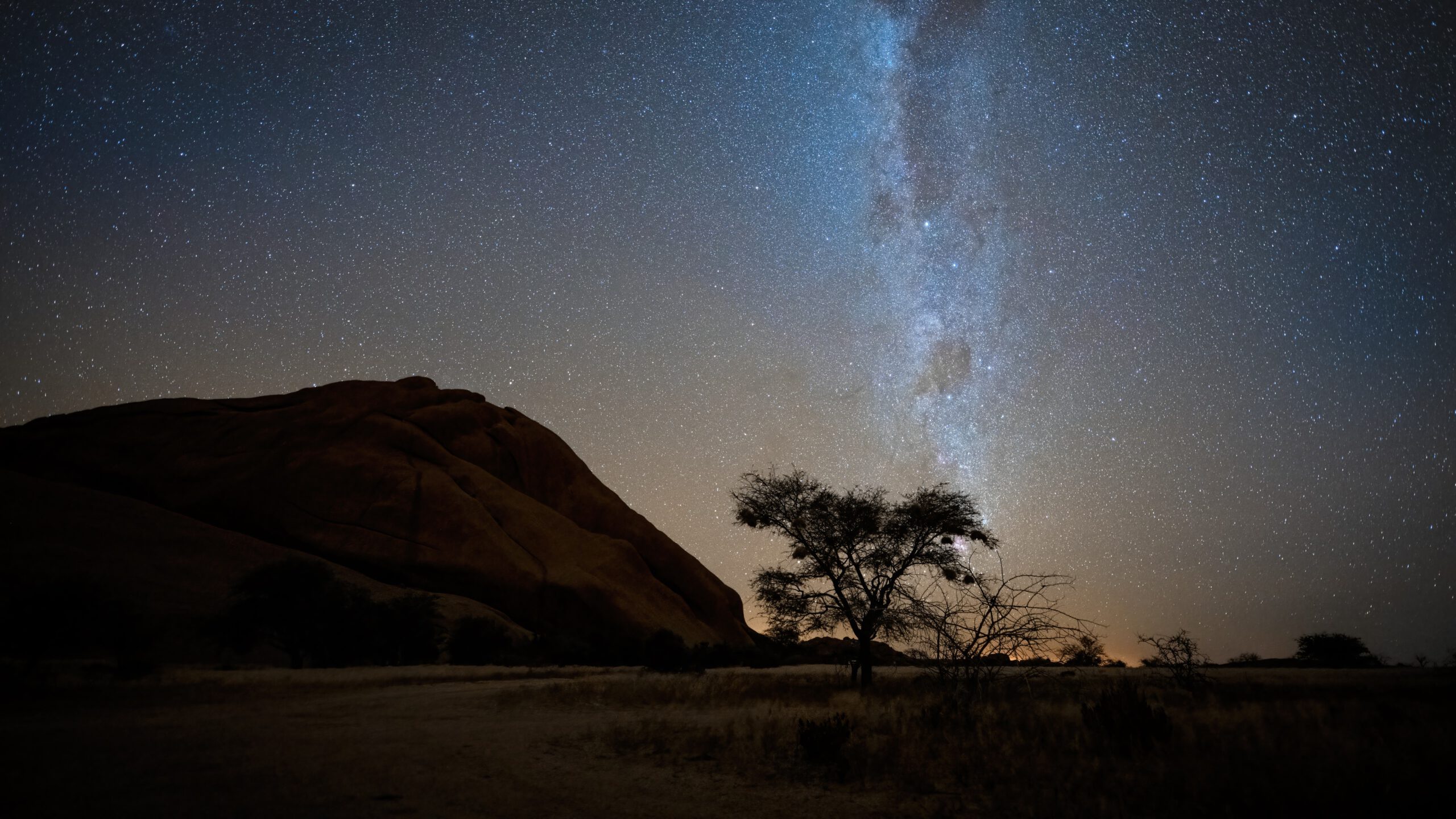
Of course, we also visited the Etosha National Park, a 22,935 square kilometer national park located in the north. It is the country’s most important protected area. We stayed at the Etosha Safari Lodge, which is located within the park. It is important to mention that you have to be in the accommodation by 7:00 p.m. and are not allowed to leave the accommodation until 7:00 a.m. Of course, the main thing is not to disturb the animals at night, on the other hand it can be very dangerous to be out and about in the bush. Anyone who is caught outside of these times by the rangers, who are very attentive everywhere, can have serious problems. That’s no fun. Wild animals are unpredictable. Anyway, it is not allowed to leave your vehicle in any way. Exceptions are the camps and the secured rest areas, some of which also have toilets.
It was here for us to get up early the next morning, by 6:00 everyone had gathered for breakfast. I had already assembled my photo equipment ready for departure the evening before. So we left on time and were excited to see what the day would bring. The temperatures were still pleasant, but with every hour that passed, the rising sun did not save with its strength.
We were aware that the animals would not necessarily appear where we would have liked to see them. So it was said on all sides to keep one’s eyes open. Attention, above all, also serves to ensure safety. With an average speed of 20 – 25 km/h, which is allowed on the narrower paths, gave us the opportunity to spot animals in the thickets of the bush. For Bushmen it’s not an issue to discover animals, which we discovered only after looking at them several times. Perfect, always their camouflage.
Then it was finally time. Our guide spotted this black rhino. The animal only lingered for a moment as I was able to photograph it here. He turns away and moves comfortably further into the thicket. Still, what an exciting moment for all of us. Fascinating to see such a creature in the wild. It seemed as if our eyes met for a moment of alertness.
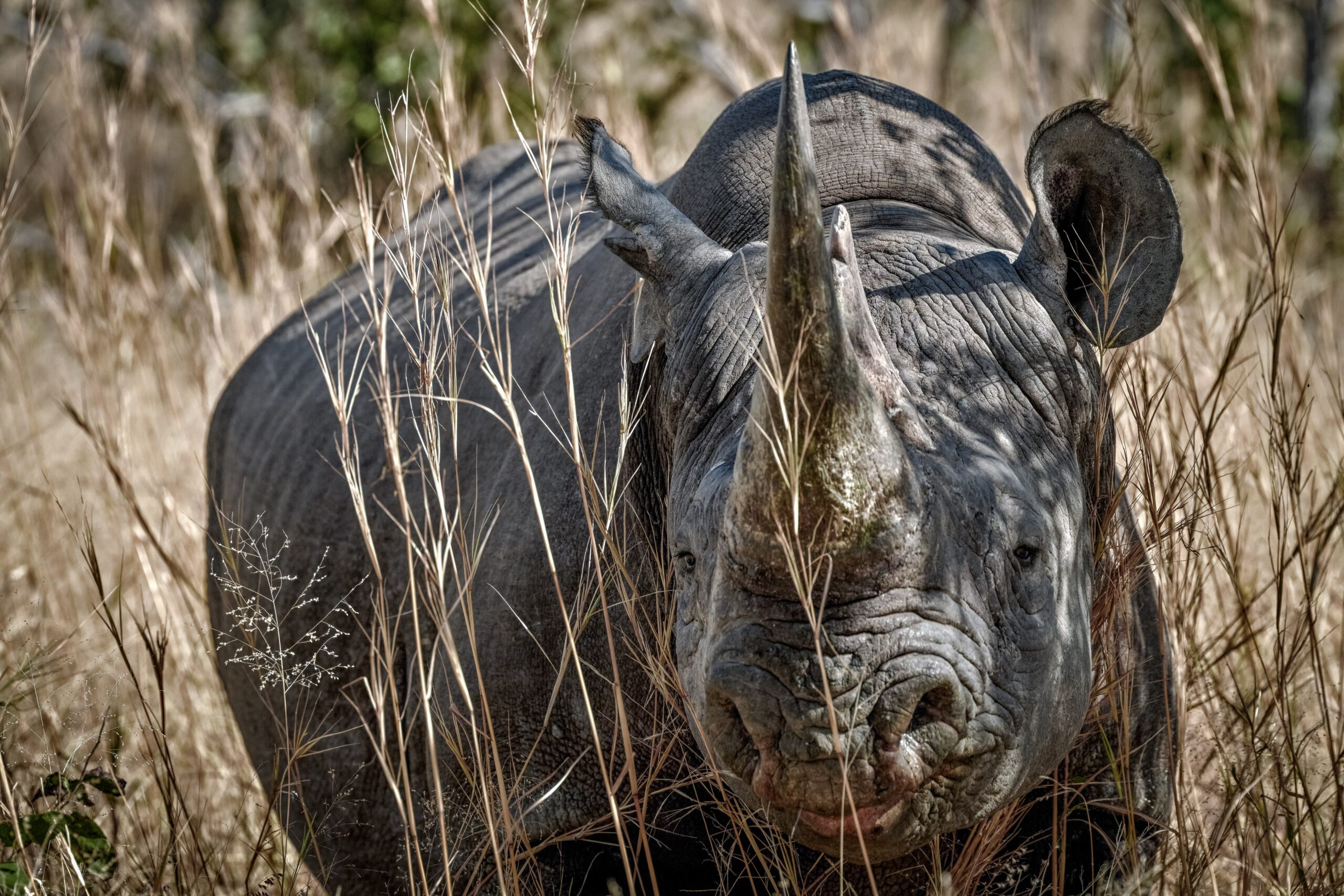
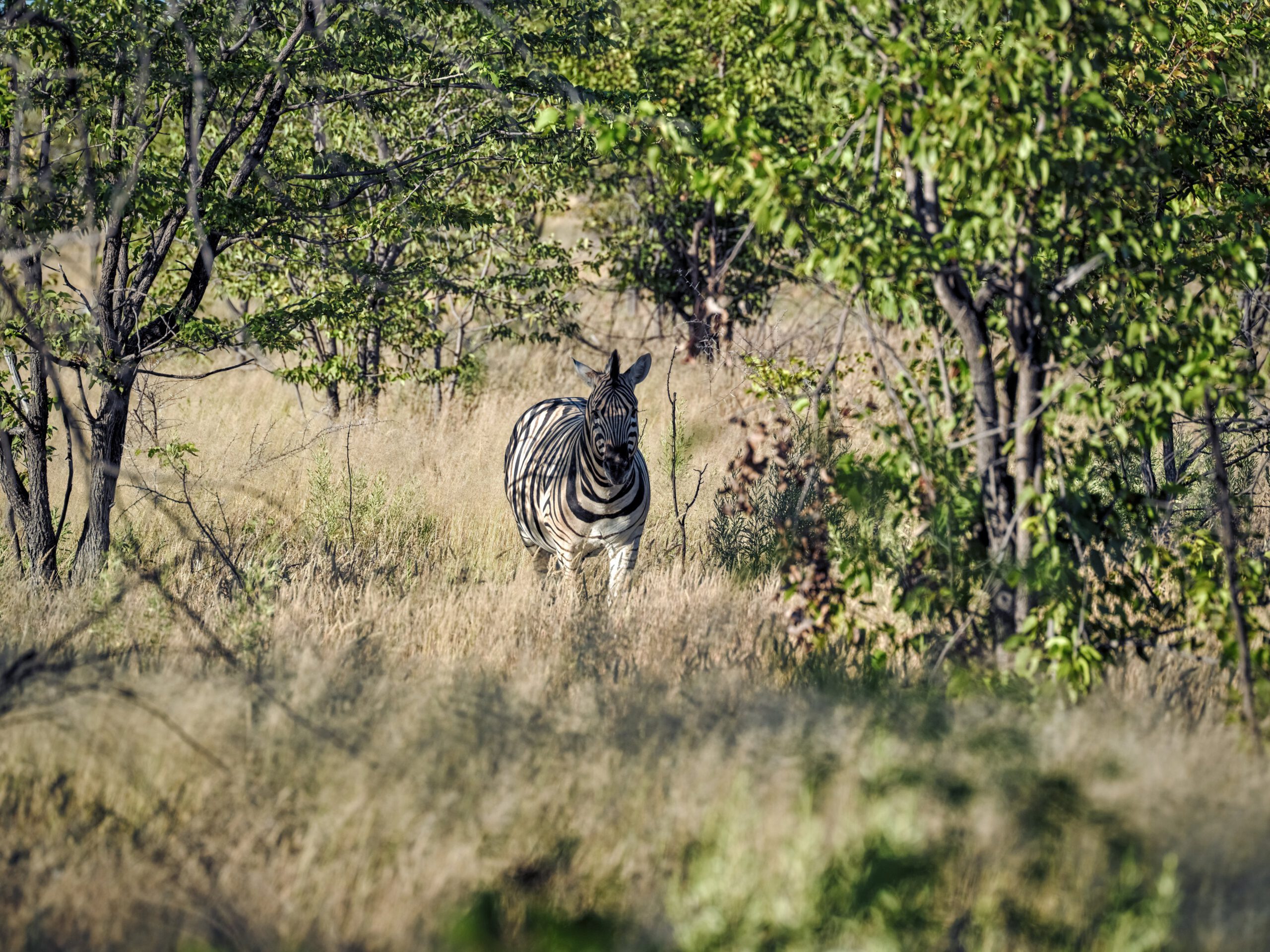
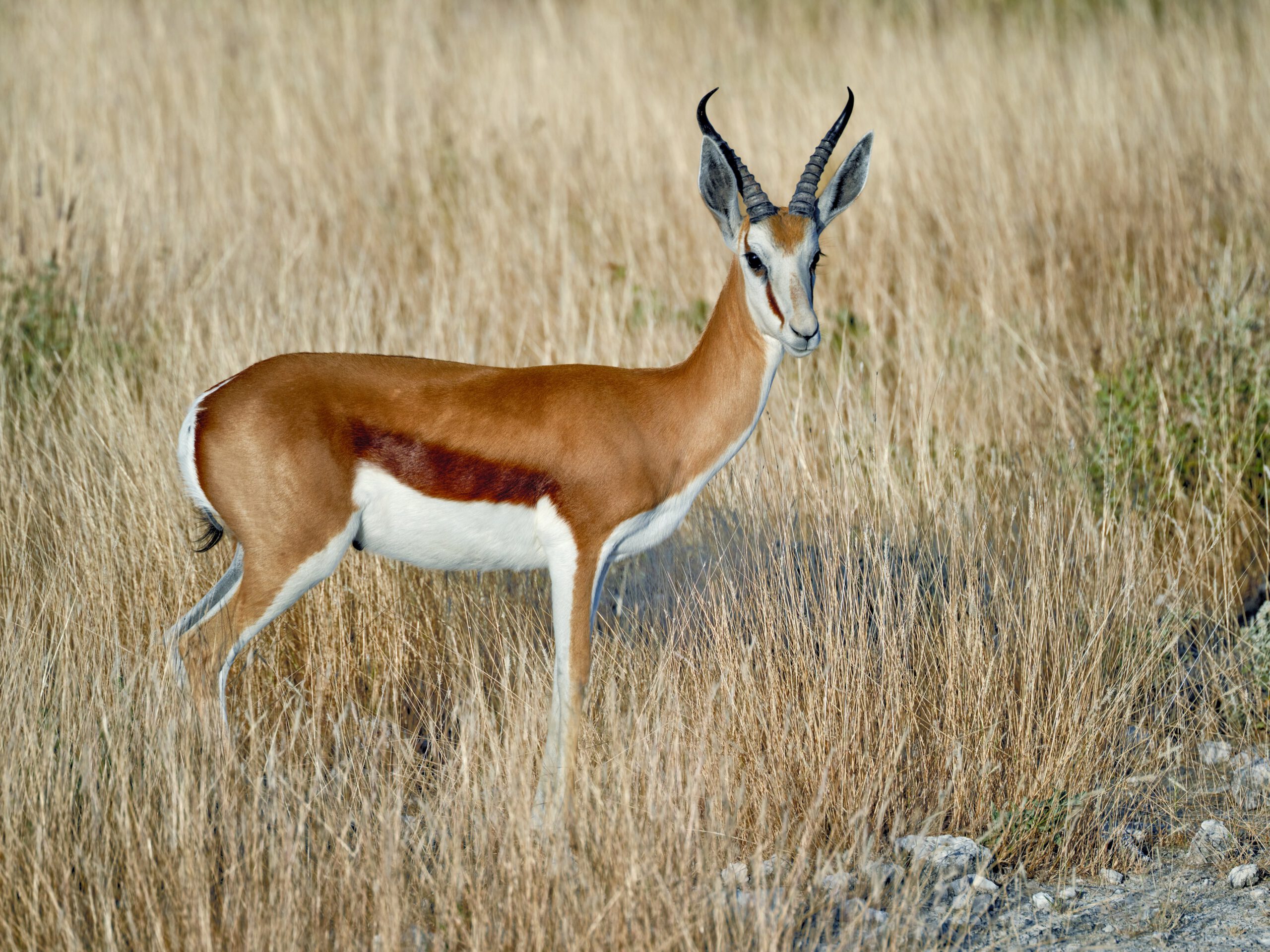
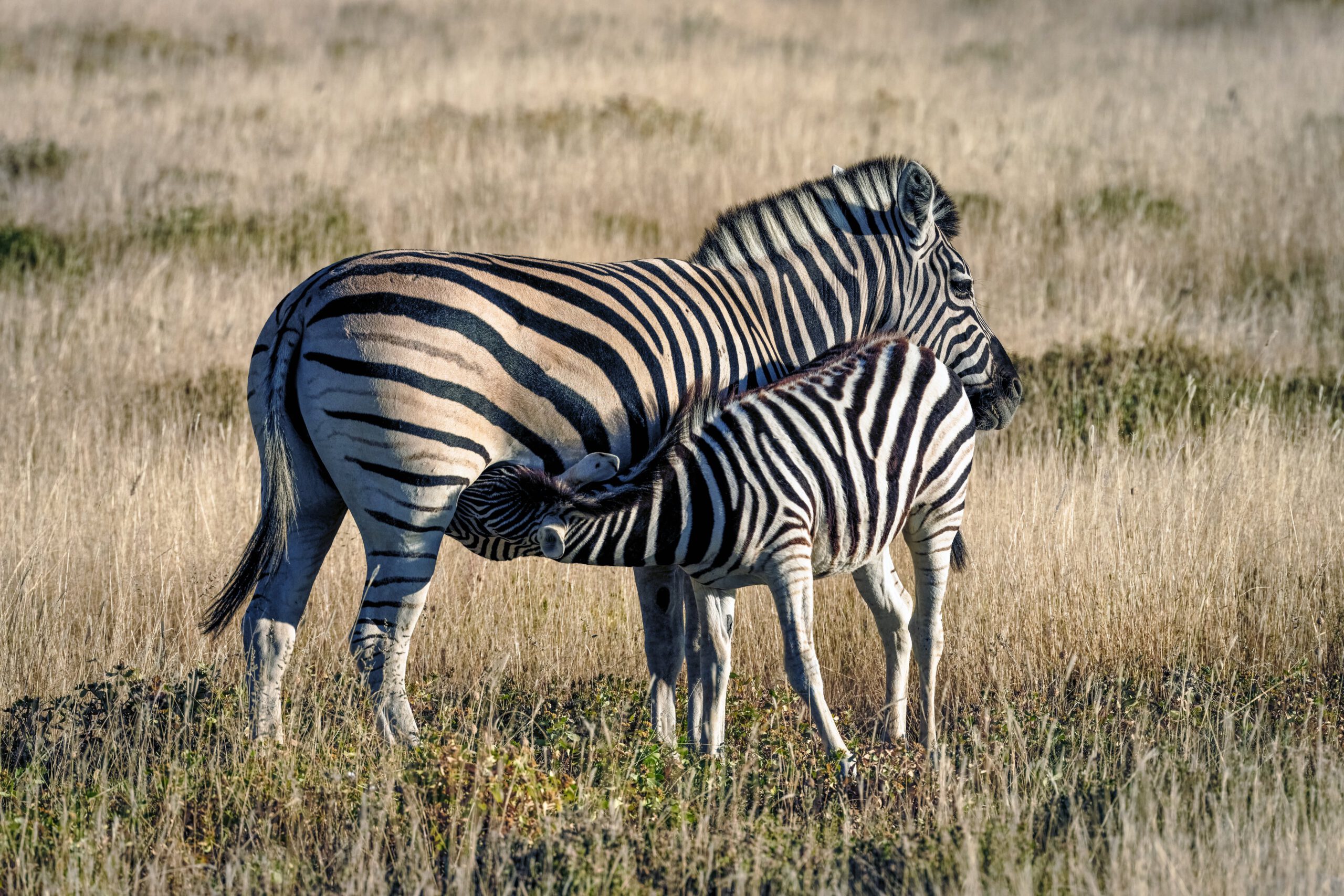
Scorching midday heat makes the air shimmer. The drought is omnipresent, because months have passed and so far hardly any rain has fallen to turn the landscape green again, let alone fill the already few water points with „liquid gold“ again. For the wild animals that live here, it means sharing the waterholes with everyone. Elephants, rhinos, lions and leopards and maybe giraffes have the best chance at these vital oases to take in the coveted elixir of life, more or less, in peace. On the other hand, zebras, kudus and springboks have to be constantly on guard to avoid being targeted by the superior big cats. It was clear who was in charge here. Even when the lionesses roamed at a greater distance, all the other animals never took their eyes off of them. The risk of being attacked is too great.
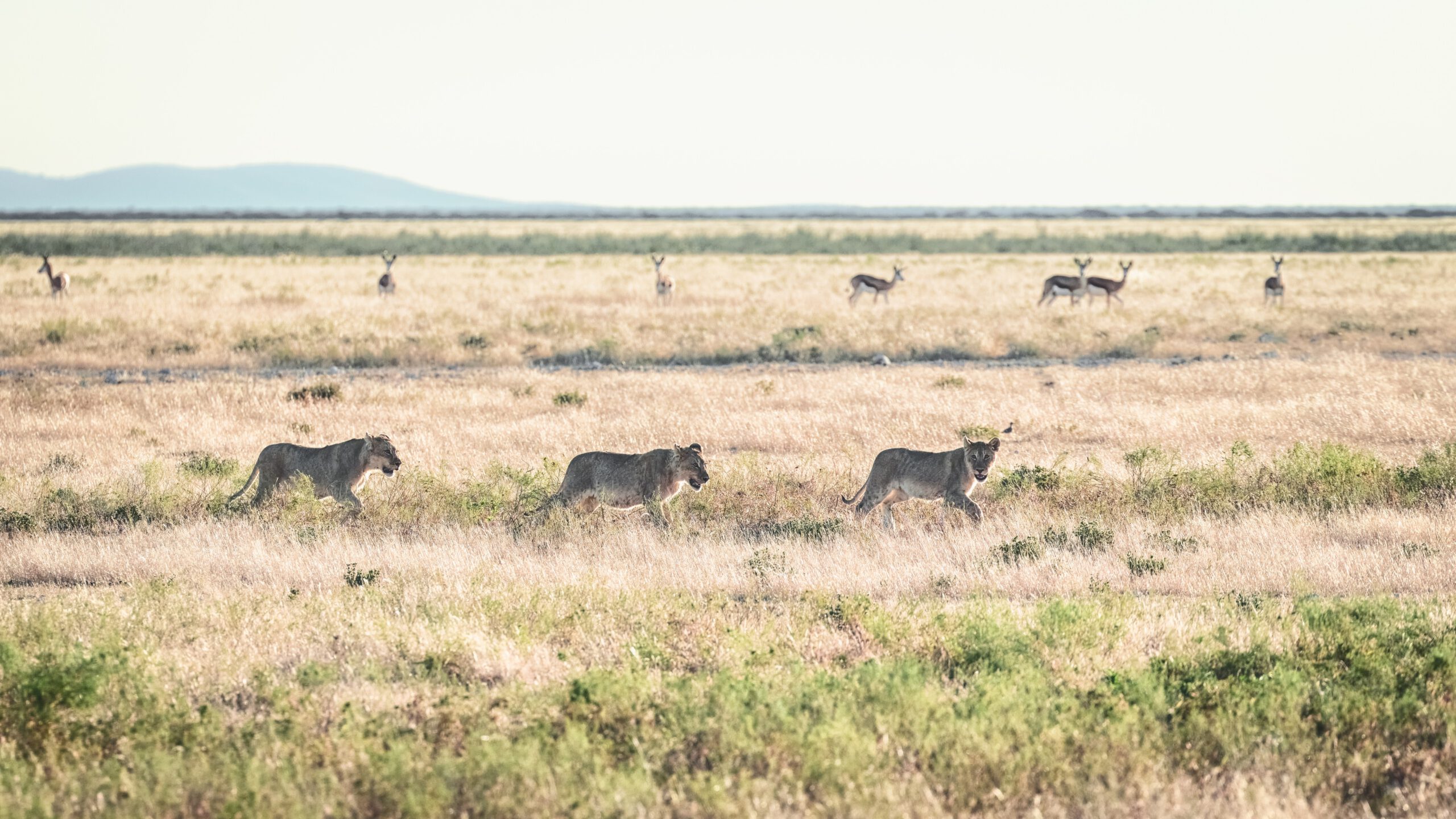
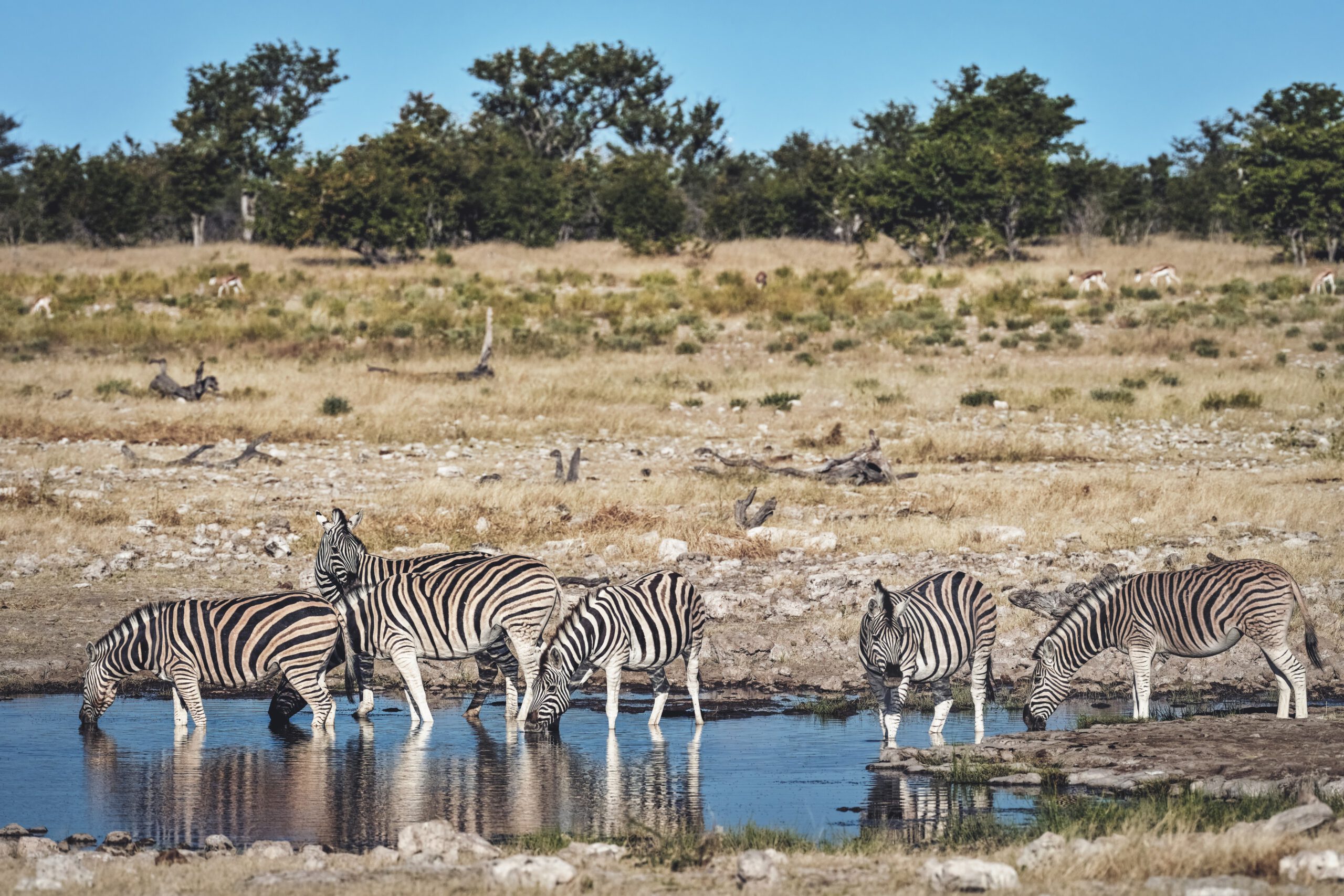
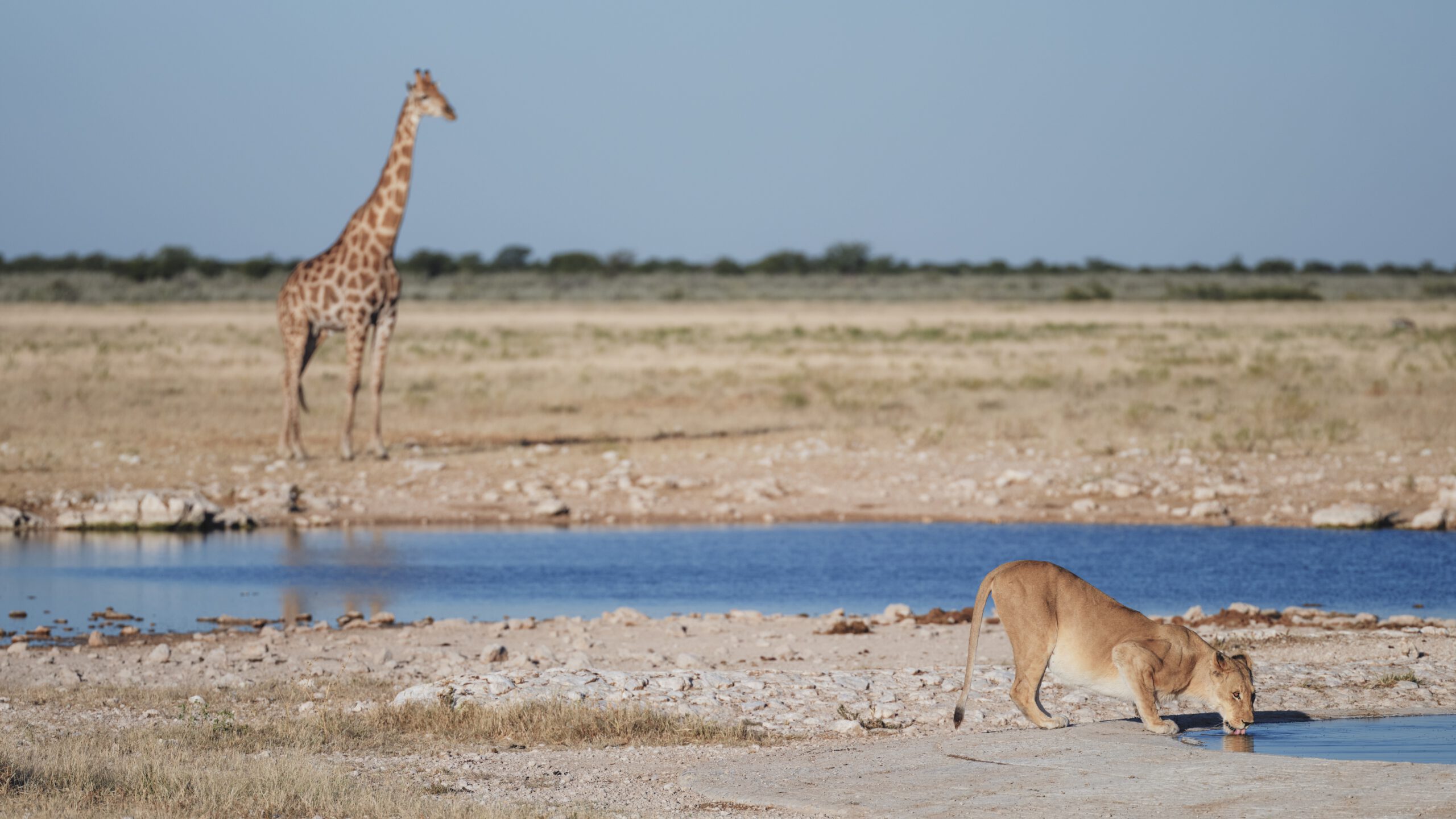
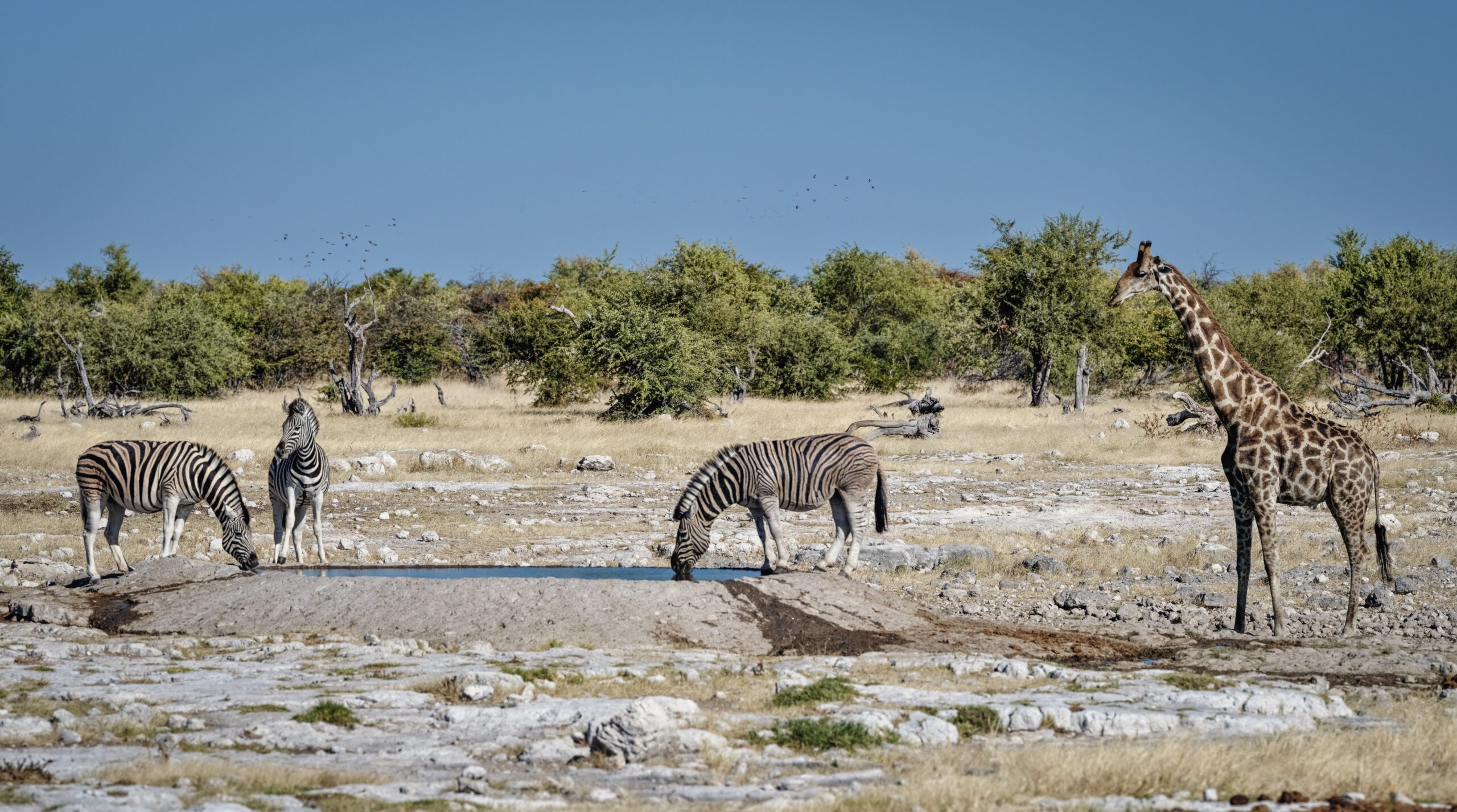
During the day, the animals usually flee the midday heat and have disappeared into the shade of thickets and trees or, with luck, can be found at one of the few watering holes. On the other hand, at midday, one often discovers native birds of all kinds sitting in the trees, such as the beautiful colorfully feathered roller, the southern yellow-billed hornbill and the brown-crowned roller.
